
This publication appears on the occasion of the program Brian Wei!: The AIDS Photographs at the Center for Photography at Woodstock, Woodstock, New York, April 30-June 12, 1994. Public lecture by the artist: April 30. Workshops for young people conducted by Mr. Weil, 1';{ay1.
Brian Weil: The Aids Photographsis a touring exhibition originated by Photographers + Friends Against AIDS. The international tour of this exhibition is organized by VISUAL AIDS with support from Photographers+ Friends United Against AIDS, the Andy Warhol Foundation for the Visual Arts, Inc., the Jerome Foundation, and the AIDS Foundation of St. Louis-Earl Millard Fund.
The Center gratefullyacknowledgessupportfrom the New York State Council on the Arts VisualArtists Program,the National Endowmentfor the Arts VisualArtists Organizatiom Program,and the Narional Endowmentfor the Arts Museum Program.
This catalogue supersedes CENTER Quarterly #59, Vol. 15 No. 3, ISSN 0890 4639. Copyright© 1994 the Center for Photography at Woodstock, 59 Tinker Street, Woodstock, New York 12498. TEL: (914) 679-9957. FAX: (914) 679-6337.
Catalogue essays© 1994 by David Levi Strauss, Brian Weil, Gisela Hossmann, Matuschka, and Rosy Martin. All photographs and artists' texts reproduced in this catalogue are copyrighted by the artists. All rights reserved. No part of this publication may be reproduced or transmitted in any form or by any means, electronic or mechanical, without written permission form the Center for Photography at Woodstock. The opinions and ideas expressed in this publication do not represent official positions of the Center.
Printing by Kenner Printing Co, Inc,, New York City. Design by Kathleen Kenyon. Text proofreading by Joan Munkacsi. Composition by Digital Design Studio, Kingston, New York.
The CenterQuarterlyis distributed by Bernhard DeBoer, Inc., 113 East Centre Street, Nutley, New Jersey, 07110.
STAFF:
Executive Director, Colleen Kenyon; Associate Director, Kathleen Kenyon; Executive Assistant, Lawrence P. Lewis; Program Assistant, Derek Johnston. Volunteer Librarian, John Dydo. Darkroom Manager, Ben Caswell. Spring Ans Administration Interns Cheri Lane, Jojo Weinberg.
BOARD OF DIRECTORS:
Susan Fowler-Gallagher, Rollin Hill, George Holz, Colleen Kenyon, Ellen Levy, James Luciana, Betty Marks, Elliott Meisel, Marc Miller, Joan Munkacsi, Jose Pica yo, Lilo Raymond, Alan Siegel, Tom Wolf.
ADVISORY BOARD:
Norton Batkin, Charles Biasiny-Rivera, Ellen Carey, Philip Cavanaugh, Penelope Dixon, Susan Ferris, Cheryl Finley, Julie Galant & Martin Bondell, Beth Gates-Warren, Howard Greenberg, Sue Hartshorn, Bill Hunt, Greg Kandel, Peter Kenner, Alan Klotz, Ronald Kurtz, Peter MacGill, Ann Morse, Sandra S. Phillips, J. Randall Plummer, Ernestine W. Ruben, Julie Saul, Susana Torruella-Leval.
Front cover:
© BRIAN WEIL, Dr. Claude, Medicine Man, with his cure for AIDS, Petionville, Haiti, 1988
MISSION: The Center provides an artistic home for contemporary photographers with programs in education, exhibition, publication, fellowships, and services which create access to professional workspace, nourishing responses, and new audiences. Our purpose is to enhance dialogue, encourage inquiry, and communicate ideas about contemporary photography through innovative programs. As an organization created and influenced by artists, we strive to bring together a culturally diverse community of artists, curators, writers, and the general public, in an environment that encourages creative interaction in the exploration of the photographic medium.
SUBSCRIBE TO THE CENTER QUARTERLY
This critical journal, covers new concepts, critiques old ones, presents new visual artists and writers, and explores contemporary ideas from across the national and international field. Subscription rate for four Quarterly issues per year are: $25/USA, $40 / Mexico & Canada, $45 / International. Single postpaid issues are: U.S.A. $7 I $12 Canada & Mexico / $17 I International, postpaid donation.
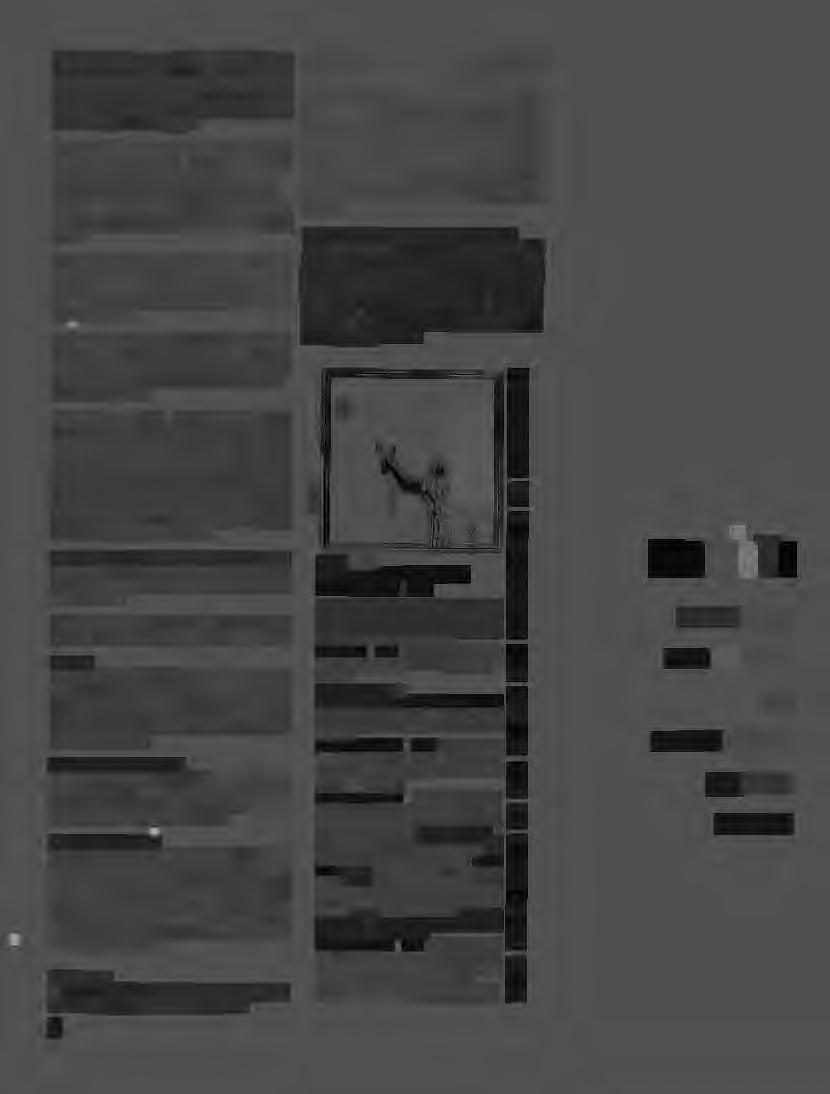
April 30 • June12
BRIANWEIL:THEAIDSPHOTOGRAPHS
JESSICAGUDNASON / SOLO
July6 • August7
VISITINGARTISTS'EXHIBITION/MarkArbeit,Thomas Corabosi,EikohHosoe,PatrickNogoloni,LilaRaymond, AlexWebb,amongothers/inlernoliono//.
GAYECHAN/ SOLO(b. HongKong,livesHonolulu, HI).An in/er-disciplinaryartistshowsa photographicins/a/lotion.
August20 • September24
MANUELKOMROFF:KEYSTOUNLOCKTHEHEART Photographsandpaintingsmadein the 1960'sloanedby OdeffeKomrall,Manuel'swidow,whoresidesin Woodstock,NY.
VINCENTVALLARINO / SOLOTonedgelatin-silver prints of over-/ifesize/lowersshownas metaphorical obslraclionsby thisphotographerfromMillbrook,NY.
October15 • December 4
FIREWITHOUTGOLD/ PhotographyCo-Curators: Miriam Romoisand ChristineJackson.YongSoonMin, Alber/Chong,JoleneRickard,Davidlee,Allande Souza, LauroAguilar.An exhibitionlo enlightenthepublicabout workbyphotographers of co/or.HYBRIDIDENTITIES / VideoCurator:MonaJimenez.Contemporaryvideowork thataddressestheissueal mixedcu/luro/identity.A CALL FORACTION,panel,Saturday,October15 at 2 pm at CPW,freelo thecommunity.Themesof identityand self representation.Panelists:CharlesBiasny-Rivera,Susana TorruellaLeval,JoleneRickard,MiriamRamois,Deborah Willis.A receptionwithrefreshments/allowsal 4 pm.A BuildingLinksprojectof education,exhibition, publication,film,and video.
!SABELLALAROCCA/SOLOWitha Mexicanmother andon /lo/ionfather,diversecu/lureshavehadan impact an herwork.Isabellascrutinizespersona/andculturalmy· thalagyusingthemediumof photoassemblage.
TheCenteris openNoonlo 5 pm,Wednesday-Sunday
David Levi Strauss
Brian Weil
Dr. Gisela Hossmann
Rosy Martin Matuschka
2
~u .£ §: • \ t rs ·j -~ ye @ '--=-==----_. ,q
::..:::: '-' C> IQ C> C> 3= 1c:c >= Q.. c:c a:: (.,!:) C> IC> = Q.. a:: C> a:: ..... 1::z: ..... '-' = IC> .,., ::z: C> IC0 = >< ..... • artists
Kathleen Kenyon

~HO~END 4 PREFACE 5 PRO RE NATA: ART & HEALING 12 THE AIDS PHOTOGRAPHS 20 ANNA OPPERMANN: FOR ME ART IS A MEANS OF DEALING WITH LIFE 28 PHOTOGRAPHY AND THERAPY: MEMORY AND IDENTITY 30 BEAUTY OUT OF DAMAGE 31 Brian "Weil Exhibition Checklist 3

artists WHO MEND
Preface
Artists who mend Repair, restore, correct, improve, uplift, advance, promote progress, elevate civilization and culture.
Many take their own experience of pain turning it into visual crusades for reform, revision, and recovery.
This creative group makes good use of illness: They encourage us to turn over a new leaf so that they can take a turn for the better.
Artists dealing with disease turn the tide: their work promotes new ideas, strengthens themselves and others who suffer; they put in order, revise, and ''doctor" what the doctors say.
Artists who mend . infuse new blood into textbook information, they remodel and reorganize "truth" so that we may re-see it. As they make pictures of suffering they also show and speak of restoration, rehabilitation, and renewal.
None has a cure for AIDS or cancer. But the artists in the article by David Levi Strauss, Brian Weil's AIDS photographs, Anna Oppermann's ensembles (she died of breast cancer), Rosy Martin's ''photography-therapy" (her collaborator, Jo Spence, died of breast cancer), and Matuschka still going strong with a mastectomy, use their work for rebuilding and surviving.
They rescue images of the sick and point to remedies. Their images set us straight and bind up wounds.
This creative work is curative it's a brave and bracing tonic for those of us sick or still unscathed but perhaps yet to be.
See CENTER QuarterlyVol. 8., No. 3, Spring 1987, The Body Politic:Photographyand Jo Spenceby Mary Warner Marien.-© 1994 Kathleen Kenyon, Associate Director, the Center for Photography at Woodstock.
Hannah Wilke, Why No, Sneeze?, 1992; wire bird cage, plastic medicine bottles, and syringes, 7x9x6 7/s", (photo: Dennis Crowley).
Courtesy Ronald Feldman Fine Arts, New York.
4
PRO RE NATA: ART & HEALING
David Levi Strauss

VISUALIZE THIS.
1994; 181/ 2 x28'1,".
Just after I moved to the Hudson Valley from puppies perched precariously on saddles, in- The artist's neighbor at the kitchen table was San Francisco last year, I got into one of those comparably bad reproductions of Monet's wa- supporting an allopathic approach to therapeuwhiskey-at-the-kitchen-table conversations ter lilies (green, muddy, and off-register), tic images: If one is sick and feeling bad, one with a sculptor friend and her neighbor about pictures of Jesus of the sort one gets free when must be treated with agreeable, soothing imart in hospitals. The neighbor was all for put-buying cheap frames, and a vast array of ages, to make one feel better. Allopathy-the ting paintings, sculpture, and photographs into anaesthetic landscapes. It was as if the AMA type of medicine currently practiced in most hospitals, as long as the images were suitably had hired Jesse Helms to be their art consult-hospitals and by most doctors in the U.S.-is "agreeable and soothing." She explained that ant. therapy by opposition or difference ( "a/lo"is since people in hospitals felt bad, the images Greek for "other"). Its basic method is to treat put there should be cheery ones, to make them When I returned from the hospital after my symptoms (never causes) through surgery or feel better. The sculptor and I countered that operation, my four-and-a-half-year-old daugh-the application of antagonistic drugs. Samuel this criterion would only insure the selection ter, Maya, gave me a very different kind of pie-Hahnemann, who invented the term of mediocre art and sentimental images. We ture. It was a drawing she'd made, on "allopathy" at the beginning of the nineteenth argued that the art put into hospitals should violet-colored lined paper. Two sheets of the century to distinguish this type of medicine be the best art one could find and pay for, re- paper were taped together at a slight angle, with from homeopathy ("like cures like"), called gardless of mood, and that only really good art a double line running from one end to the allopathy "the curing of a diseased action by could possibly be therapeutic. The neighbor other, bisected by many crossing lines. This the inducing of another of a different kind, yet scoffed and dismissed our arguments as elitist thermometer or spinal-cord image was covered not necessarily diseased." and self-serving. with energetically drawn lines in green, orange,
Soon after this conversation I injured my shoulder and was hospitalized for reconstructive surgery. In the ensuing months of therapy and examinations in the hospital and in various doctors' offices and clinics, I studied the images on the walls of these therapeutic institutions. What I found, almost without exception, was bad art: color photographs of cocker spaniel
and yellow, tying it all together. When Maya handed me this picture, she cold me it would make my shoulder better. She instructed me to keep it near me and drape it over my injury whenever I could, especially at night. Over the next three months, she made sure I followed her instructions, and scolded me whenever I forgot to use the image.
Looking at the cocker spaniels on the saddle and the bad Monet reproductions in the doctor's office, I realized that these images are there because they are entirely appropriate to the allopathic context. They are allopathic images. And this allopathic approach to images explains a great deal about the way images are treated in this society. The allopathic ideology extends far beyond medicine, of course, and is
Nancy Burson in collaboration with Kunio Nagashima, Visualize This, 1991; poster from the exhibition Body &Soul: Contemporary Art and Healing,
5
My daughter's'therapeuticimage is of a wholly different order.It is a practical talismanic device to aid in healing.No one told my daughter that imagescan be therapeutic-she just knew it.
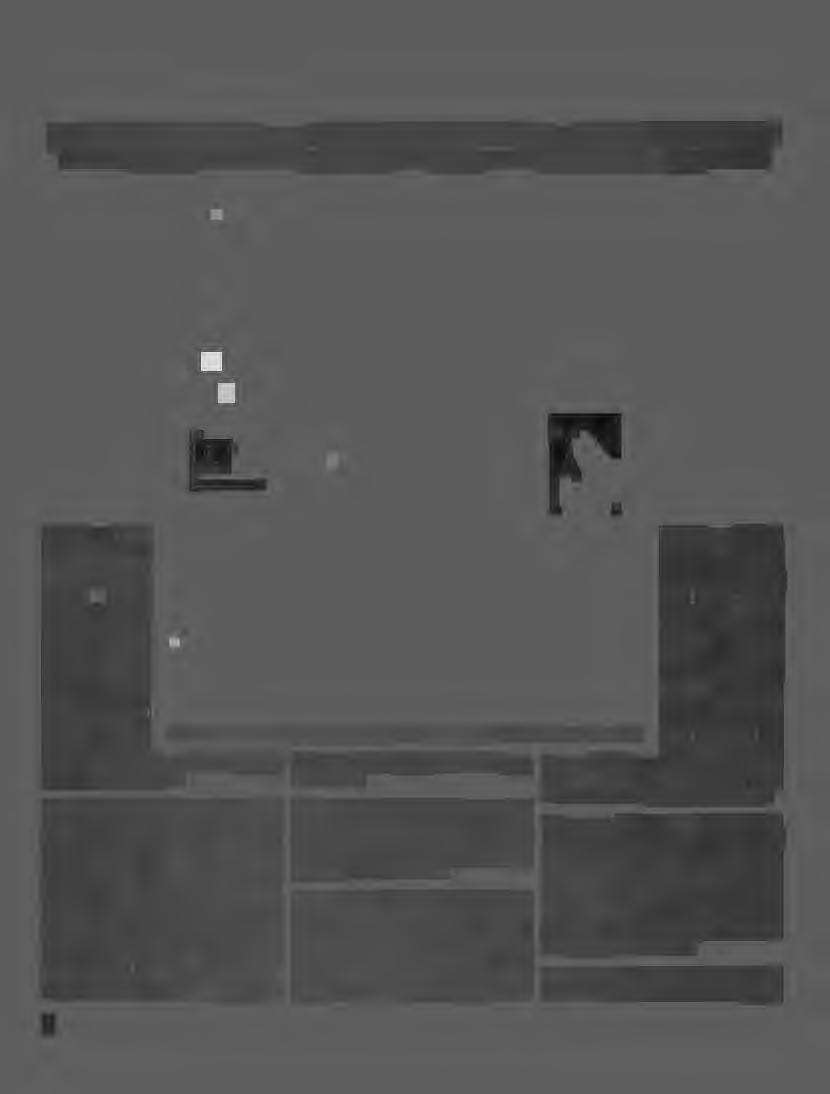
perhaps most clearly seen in international policy ("surgical strikes" in Desert Storm, killing people to defeat hunger in Somalia) and domestic crime policy (the burgeoning prison industry, the War on Drugs, calls for the death penalty). The idea is that if you make the
certain, very limited, situations? If you break an arm or a leg, you want an allopath. If you suffer maJor trauma or injury co your body, you need an allopath. But for anything more subtle, like chronic conditions or diseases, or for the subtle art of healing after surgery or wounding, allopachs are almost entirely useless. symptoms go away, however temporarily, you make the underlying problem disappear too.
My daughter's therapeutic image is of a wholly different order. It is a practical talismanic device to aid in healing. No one told my daughter that images can be therapeutic-she just knew it. This is in fact very old knowledge, going back at least to the Mousterian era, when Neanderthals carved parallel an_ddiagonal lines and painted red circles on bone and stone, and continuing in Western civilization through the Renaissance. Though dealt a crushing blow by the Reformation, this kind of medical knowledge has managed to survive even in the U.S. if one knows where to look for it, though it is
still easier to find, at higher levels, in other parts of the world.
These non-allopathic approaches recognize that images and symbols are real, and chat the crystallization of a desire or concept in the form of an image can become a potent agent, directly affecting the course of events.
Now, it might be argued chat the cuddlycocker-spaniels-on-the-saddle image might also be an effective agent for someone. But when I hear healthy people say chat sick people want to look at "agreeable, soothing" images, I wonder. Do they? Do you? Or does the allopathic image, like allopathic medicine, only work in
I suspect chat the same is true of allopathic images. They might be briefly effective for people in extreme states of pathological depression.
In recent years the AIDS crisis has underscored the limitations and failures of allopachy and of the total health-care system and has also caused a renewed interest in the therapeutic image and the place of art in healing. This, coupled with the impact of feminism on the art world since 1970, resulting in more art of social engagement, has led to an outpouring of art concerned with healing of various sorts.
The Women's Health Show, organized by the Women's Caucus for Art and held in conjunc-
Hannah Wilke, installation view, INTRA-VENUS (photo: Dennis Cowley). Courtesy Ronald Feldman Fine Arts, New York.
6
In recent years, the AIDS crisis has underscored the limitations and failures of allopathy and of the total health care system, and has also caused a renewed interest in the therapeutic image, and the place of art in healing.
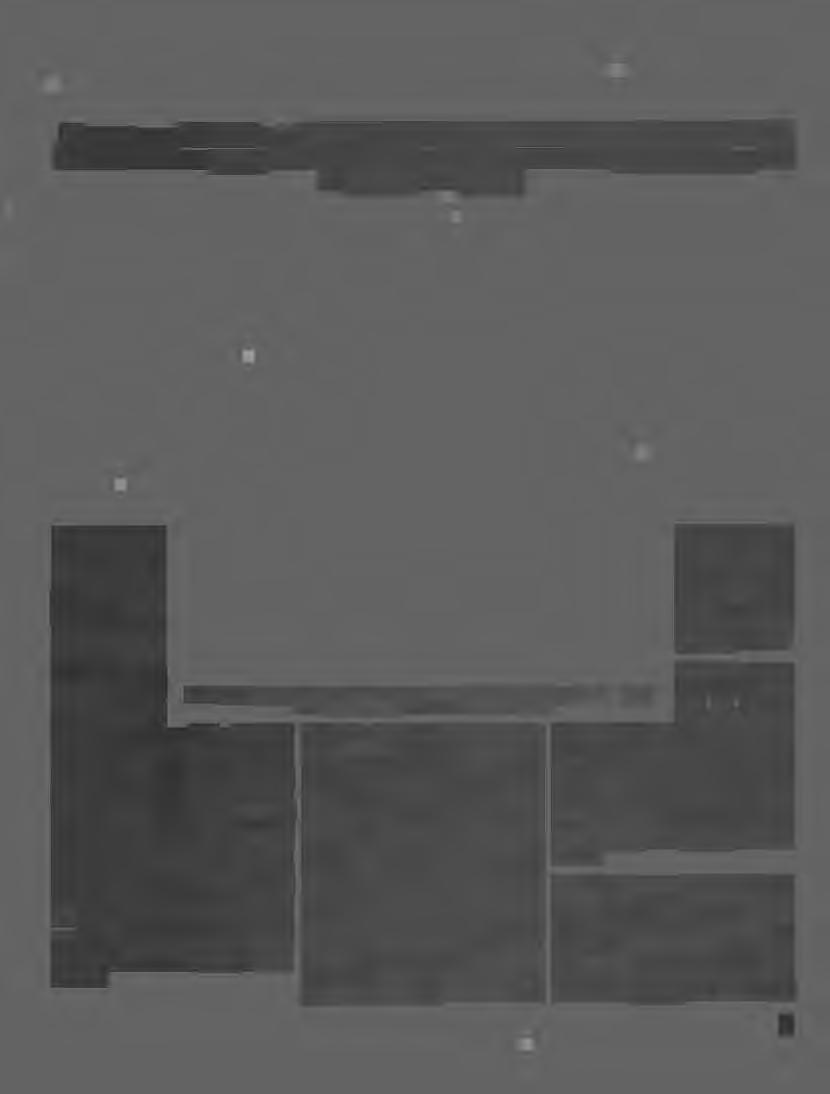
tion with the WCA national convention in New York City in February, comprised seven exhibitions in galleries and clinics, along with related symposia, panels, video and performance programs, and readings. All parts of the show dealt in
remember Hannah telling me, 'It was the devastation of my mother's breast cancer and the way Claus treated me that caused my own cancer'-and ultimately killed her."
The show at Denise Bibro coincided with that of Hannah various ways with women's health concerns such as breast and ovarian cancer, AIDS, menopause, mental health, body image, and inequities in medical research, treatment, and coverage. All types of visual, aural, and textual approaches were employed. In Caught Between Mind (Urge) and BodyA.1.R. Gallery showed mostly didactic and literal work dealing with the politics of women's health, while Gathering Medicine at Art In General and Pasando La Mano/Laying the Hand at Soho 20 Gallery included various kinds of therapeutic images: pedagogical and descriptive, cathartic, talismanic, ritualistic, allopathic. ... The Art In General and Soho 20 shows were both organized by Coast to Coast: National Women Artists of Color, an artists' coalition.
The show at Denise Bibro Gallery, Diagnosis: Breast Cancer, was curated by Mary Ann Wadden, who would like to see "a visual mobilization [around breast cancer] similar to the public awareness raised by the art community to the AIDS crisis." The show included works by the few artists known for addressing the issue, such as Nancy Fried, Jo Spence, and Hannah Wilke, as well as work by artists coming to this subject for the first time. Hannah Wilke's photograph of her mother after her mastectomy hung next to an angry appropriation of a Claes Oldenburg drawing by Karen Finley. Over Oldenburg's drawing of a woman hanging on a meachook, Finley scrawled in red, "Yeah, draw Hannah on a meat hook, Claustreat her like shit-I hate your big bats, your giant popsicles, your pop art-because I can
Wilke's devastating laseworks, shown under che tide "Intra-Venus" at Ronald Feldman Fine Arts in February. That show included large photographs of Wilke (by Dennis Cowley) in the final stages oflymphatic cancer, as well as her last sculptures and drawings. The show was a testament to the endurance of expression, even unto death, and a characteristically fearless depiction of love's labor lost.
The kind of assumptions upended by chis kind of work, about the female body and its depiction in art, are now causing the kind of indignant reactions that male body images did during the Congressional/NEA battles of recent years. Last October three women artists were censored from a show scheduled for the Cannon Office Building at the U.S. House of
Hannah Wilke, February 19, 1992, #6 from INTRA-VENUS, 1992-93; chromogenic superglass prior, 47' hx? 11/," (photo:
Dennis Crowley). Courtesy Ronald Feldman Fine Arts, New York.
7
The show was a testament to the endurance of expression, even unto death, and a characteristically fearless depiction of love's labor lost.

Representatives in Washington for being "sensationalist" in subject matter. The show, Healing Legacies: A Collection of Art & Writing By Women with Breast Cancer, was sponsored by the Breast Cancer ACTION Group in Vermont. One painting on bluestone by Constance Eger Shneider and two photographs-Susan Markisz's The Road Back: Self Portrait II, pictur-
ing her from the waist up with her hands covering where her breasts would be, and Margaret Stanton Murray's Figure #4, a frontal nude picture of the artist from her thigh up,
showing her mastectomy with an implant before it is inflated-were judged to be against House rules forbidding the depiction of "subjects of contemporary political controversy or of a sensationalist or gruesome nature." This action was taken in the midst of an epidemic that strikes one woman every three minutes and kills five women every hour.
The president of the Breast Cancer ACTION
Group, Virginia Soffa, cold me that much of the therapeutic value of Healing Legacies came from gathering women together. She compared the effect of this gathering with that of the Names Project AIDS Quilt, where a collective healing takes place throughout the process, and especially through a public showing, telling, naming. In fact, the two most successful contemporary public art works, the AIDS Quilt and Maya Lin's Vietnam Memorial, both work
in this way, providing a site for people to come together.
The DeCordova Museum in Lincoln, Massachusetts, hosted (April 25 - June 12) the first large-scale exhibition to explore the relation between art and healing in a contemporary context. Body & Soul:
Contemporary Art and Healing includes the work of nineteen artists, in all media, from across the country. The show was initiated by Gina Halpern, Executive Director of the Cambridge-based organi-
zation Healing Through Arts, and was organized by curators Rachel Rosenfield Lafo and Nicholas Capasso, with assistance from Sarah Rehm Roberts.
In the catalog for the show the organizers describe the growing "healing arts movement," spearheaded by a number of grassroots organizations that are bridging the gap between artists and health-care providers. The curators identify four types of healing art that are
Karen Finley, Untitled, mixed media/cext, 1994; on loan from Patrick Moore. From rhe exhibition Diagnosis:
8
Breast Cancer, the Women's Health Show, 1994.
The AIDS images,[producedin posterform in 1991], picture an HIV-infected T-cellon one side, and a healthy T-cellon the other. The directive "VISUALIZE THIS" can be read as a correctiveto the cloyingvisualizationsof some new-agepractitioners.The image is meant to be of practical use in thefight against this disease.

included in the show: "l) Art intended to directly heal viewers, 2) Art created by artists to facilitate their own personal healing, 3) Art about aspects of the healing process, and 4) Artist-designed healing environments." Since category 2 veers dangerously close to "art therapy" and cat-
egory 3 tends toward conventional didacticism, it is the first and fourth categories that will be the test of a "healing arts movement." The curators' introduction states that the movement's "active, one might say utilitarian, stance in reestablishing and maintaining health echoes the concerns of many artists today who strive to reinvigorate the arts by exploring new social, political, practical, and community applications." They relate the incursions of this movement into hospitals, clinics, hospices, and other health-care facilitiesto "art'sgrowing movement away from exclusive galleries and museums to a more public, and some might argue, more relevant realm."
But only if the art is good. And much of it in this first show is. Nancy Burson is an artist who has worked at the boundaries of science and technology and art, collaborating with engineers and programmers to turn information into compelling images. Her computer-generated composite portraits became ubiquitous in the eighties, putting a face on complex data and calling into question our belief in photographic images. Her new book of faces, titled Faces,is just out from Twelve Trees Press. Her subjects this time are children with special faces (caused by cranial/facial disorders or progeria, a disease that rapidly accelerates aging), and the result is a delight.
In 1988 and 1989 Burson worked with doctors and medical technicians to develop visualization aids for various diseases. Using images made with an electron microscope, Burson created visual aids for use against lung cancer, breast cancer, cervical cancer, leukemia, and AIDSrelated pneumonia.
The AIDS images, [produced in poster form in 1991], picture an HIV-infected T-cell on one side and a healthy T-cell on the other. The directive "VISUALIZE THIS" can be read as a corrective to the cloying visualizations of some New Age practitioners. The image is meant to be of practical use in the fight against this disease.
Several other artists in the show (Eric Avery, Maggie McCurdy, Ann Leda Shapiro) incorporate cellular forms in order to get insidethe infected, contagious, immuno-suppressed body and open it up. It is of course no accident that these forms resemble the mandalas used in the traditional healing practices of the Navajo, Tibetan Buddhists, and the medieval Christian
Leah Siegel, from the Ontology of Pain series, mixed media, MRI/computers, 1993-94. From the exhibition Examining Room, The Women's Health Show, 1994 (photo: Colin Hamilton).
9
At a time when almost everyone agrees that the US. health care system is so badly broken that all the king's horses and all the king's men, women, and paid consultants are not going to be able to put it back together again, health-care practitioners are becoming more open to "alternative" therapies and approaches.

Another artist in the show, Ottie ThomasSmith, makes art that is directly therapeutic in a way that may become more and more relevant. Trained as a sculptor at RISD, ThomasSmith now works as a "maxillo-facial prosthetist," which means she constructs, sculpts, and paints eyes, ears, noses, and entire faces. These artificial face parts are made of implantable silicone, acrylics, and pigments and are made to be attached with adhesives or to slide under existing tissue. They are custommade for people who have suffered massive tissue loss from cancer, deforming surgery, gunshot wounds, or congenital problems. ThomasSmith's sculpture comes alive in a way that blurs
the line between representation and reality.
Little as we know about the way we are affected byform: by colorand light, we do know this, they havean actualphysicaleffect.Varietyofform and brilliancyof colorin the objectspresentedto patients areactual meansof recovery.Peoplesay the effectis only on the mind. It is no such thing. The effectis on the body too.
-Florence Nightingale, Notes on Nursing: What It Is and What It Is Not, 1859
We must realizethat everythingin nature [interacts by] mutual resonance,although no one understandsthe causes[ofparticular instances].
-Sun Ssu-mo, seventh-century Chinese physician and recluse scholar
Very little is known at this point about the actual physiological effects of images. What happens to the autonomic nervous system, to the neurotransmitters and hormones, when a person is moved by an image? Recent brain research has found physiological links between the parts of the brain responsible for imageprocessing and the immune system. Bur such connections are still viewed with suspicion or disdain by allopathic orthodoxy, which tends to reinforce and defend the imagined dichotomy between an objective, material world in which certainty and law prevails (science), and a subjective world of mind, which is largely an internal affair (art). This imagined split is becoming more and more untenable, certainly in the area of health and healing.
Diane Malley, Toxic Connections, 1994; mixed media (derail). From the exhibition Examining Room, The Women's Health Show, 1994. (photo: Colin HJmilton).
mystic Hildegard of Bingen, among others.
10
But true healing is transformative,recognizingthe cycleof illnessand healing (and living and dying) as an activeprocess.Peopleengagedin this p_rocessneed imagesthat are chargedwith meaning, not necessarily''agreeableand soothing"ones.

At a time when almost everyone agrees that the U.S. health-care system is so badly broken that all the king's horses and all the king's men, women, and paid consultants are not going to be able to put it back together again, health-care practitioners are becoming more open to alternative therapies and approaches.
In his Body & Mind catalog essay, "The Artist in the Hospital: Healing Environments in Health Care Facilities," curator Nicholas Capasso writes:
A number of fast-growing professional organizations, including the Society of Health Care Arts Administrators, the National Symposium on Health Care Design, and the International ArtsMedicine Association now advocate the incorporation of art in health care design. Furthermore, companies like Creative Conn_ectionsand The Aesthetics Collection, Inc., serve as consultants to hospitals, doctors'offices,and nursing homes which seek to build arts programs and healing environments.
The Aesthetics Collection, Inc., an indepen-
dent art advisory group in San Diego, was instrumental in the overall design of the new Patient Care Pavilion at San Diego's Children's Hospital, and created the CAD prototype for the fabrication of the Meditation Room at the University of California Medical Center. In 1992 Seattle artist Mary Ann Peters was commissioned to design the Surgery Quiet Room at the UniversityofWashington Medical Center, and the Bailey-Boushay House in Seattle commissioned twenty-seven artists to integrate site-specific artwork into every part of that AIDS nursing facility.
The danger of institutional approaches to art is that art-bycommittee tends to result in lowest-common-denominator art, art that is "agreeable." This process usually rejects transformative art as being "too intense" for the therapeutic environment and opts instead for something more ornamental. The allopathic assumption behind this choice is that healing involves a "return to normalcy (health)," or stasis. But true healing is transformative, recognizing the cycle of illness and healing (and living and dying) as an active process. People
engaged in this process need images that are charged with meaning, not necessarily "agreeable and soothing" ones.
DAVID LEVI STRAUSS is a poet, critic, and essayist who recently moved from San Francisco to Ulster County. His writings on art, photography, and the politics of representation appear in Artforum, Art Issues, Art in America, Parkett, and elsewhere. He has completed a book of essays on photography, The Radical Image, and is working on an epistolary novel in word and image titled Odile & Odette.
Hannah Wilke, October 17, 1991; Hand #6, from INTRA-VENUS, 1991; watercolor on paper, I 7'/, x I4" {photo: Dennis Crowley). Courtesy Ronald Feldman Fine Arcs, New York.
11

BRIAN WEIL: THE AIDS PHOTOGRAPHS
The national tour of the exhibitionBrian Weil:The Aids Photographswas organizedby Photographers+Friends UnitedAgainst AIDS with support from the Andy WarholFoundationfor the VisualArts, Inc. The exhibitionwas organizedby the International Center of Photography,New YorkCity,New York,and supportedby the Jerome Foundation.Brian Weil'.5photographsare on displayat the Centerfor Photography,Woodstock,New York,from April 30 to June 12, 1994.The Centers Brian Weileducation,
exhibition,and publicationproject was made possibleby the NationalEndowmentfor the Arts MuseumProgram.
12
Maria and Adriana, 1987, © Brian Weil
MARIA
Maria and Adriana Saying Good-bye, Memorial Sloan-Kettering Hospital, New York City, 1991, © Brian Weil

MARIA
AIDS was not something that I initially sought to photograph. But as more and more of my friends got sick, the need to confront the subject became powerfully and urgently apparent to me. In 1985 1 began working with the Gay Men's Health Crisis (GMHC), and that is how I met Maria.
Maria was a graduate student, and her husbancf, Fernando, a professor. When he was diagnosed with AIDS, they left New York and returned to his home in Brazil with their oneyear-old daughter, Flavia. When the baby also became ill, they decided that Maria and Flavia must return to the United States for care, as, there was virtually no treatment for people with AIDS in Brazil. At that early stage the ·minimal treatment available in the United States was Flavia's only hope for a prolonged life., Fernando was visibly sick at this point and was not allowed to come with them, as new immigration laws, instituted by United States Attorney General Edwin Meese, restricted people with AIDS from entering the country. Soon after her arrival in New York Maria tested positive for HIV; around this time she also discovered that she was pregnant.
In the mid eighties the services available for women and children with AIDS were still marginal in the United States. GMHC set up a training program to teach people who wanted to help women and children with AIDs how to coordinate and utilize the various medical and social services available to them. It was through my involvement in this program that I became, in GMHC's term, Maria's "buddy."
There were several immediate crises for us to confront together: Flavia was suffering from severe neurological disorders that made her unable even to sit up in her stroller. Basic needs, like getting her a special chair and stroller, meant going through the public health system's bureaucratic nightmare. Flavia died before the paperwork was finally processed and approved.
While this was going on, there was also Maria's pregnancy to think of. At that time, it was thought that 50 percent of children born to HIV-infected mothers would be born with the virus (it is now estimated that the rate of transmission is 15-30 percent). Maria's religious beliefs made abortion a devastating option for her, and she desperately wanted to talk it over with a priest. It took six months to find a priest who would agree to speak with Maria about the possibility of terminating the pregnancy.
Eventually, having decided to keep the baby, Maria agreed to be part of a research protocol involving HIV-infected women. Because of her participation, she was given exceptional prenatal care. About five months into her pregnancy she was hospitalized in a maternity ward with AIDS-related pneumonia. None of the nurses had treated a woman with AIDS before. Their response to Maria's illness was to put a sign on her door that read "Infectious" and to cover themselves with masks and gowns when entering her room, even though her form of pneumonia was not contagious.
At this point Flavia's condition was getting worse, and she was placed in intensive care in a different wing of the hospital. Realizing that her first child was going to die, Maria asked me to take a picture of Flavia. This was the first photograph I made for the AIDS project.
Meanwhile, Fernando was hospitalized in Brazil. He and Maria tried to comfort each other over the phone as their child was dying, knowing that they would probably never see each other again. Three months after Flavia's death, Adriana was born; a month later, Fernando died. While Maria was in labor, the attending physician, who knew she had AIDS, demanded of her: "Why are you having this baby? You're going to die soon. Your baby is going to die, and I could get infected."
It takes nine to fifteen months for a baby to shed the mother's antibodies. Only then can a test reveal if the baby is HIV positive. Month by month we watched Adriana grow, never knowing whether or not she was infected. In the thirteenth month, she tested negative. Adriana's consistent good health, AZT, and a drug to prevent the pneumonia from recurring kept Maria strong for the next year.
During the following three and a half years, however, Maria's health declined progressively as the AIDS virus continued to destroy her immune system. She struggled with meningitis, lost her vision in one eye, and was going blind in the other. She had daily transfusions that lasted between four and six hours. She was eventually unable to keep food down and lost twenty pounds. Regardless of her physical condition, Maria always struggled to maintain a loving and stable home for Adriana.
After meeting Maria, I had made myself believe that together, no matter how frightening or difficult things were, we'd get through. But in the summer of 1991 it seemed that it was time to prepare for the end. Having already endured the pain of losing her husband and two-year-old daughter, Maria was now faced with saying goodbye to Adriana. She knew she was reaching the final stages of her illness and soon would not have the strength left to take care of her. From her hospital bed at Memorial Sloan-Kettering, Maria held Adriana and kissed her goodbye. Adriana was then sent to Puerto Rico to live with her relatives.
With no strength left to fight, and only sadness to fill the silence created by Adriana's absence, Maria's confusion and dementia increased rapidly. She lost her sense of time, eventually even forgetting she had ever been ill. On August 29, at 7:30 a.m., Maria died. She was thirty-eight years old.
13
ACT UP
ACT UP (AIDS Coalition To Unleash Power) is a diverse nonpartisan group united in anger and committed to direct action to end the AIDS crisis. We meet with government and health officials; we research and distribute the latest medical information. We protest and demonstrate. We are not silent. Right now, as you read this, ACT UP is: confronting politicians at rallies, debates, and conventions to demand that they clearly articulate a plan to end the Al DS crisis; confronting public-health officials about the devastating impact of the tuberculosis epidemic on people living with AIDS; aggressively leading the charge against Blue Cross rate increases and advocating for statewide insurance reform; handing out condoms to students in front of junior and senior high schools throughout the city; and actively working with the International AIDS Conference to expand its agenda to include alternative, complementary, indigenous, and traditional medicine. Silence =death.Action = life.
-Excerpted from an ACT UP/NY informational statement, 1992
In 1990 ACT UP members rallied at the National Institutes of Health in Bethesda, Maryland, demanding that new drugs for people with AIDS get released more quickly and insisting that more research be done regarding women with HIV. People came from all parts of
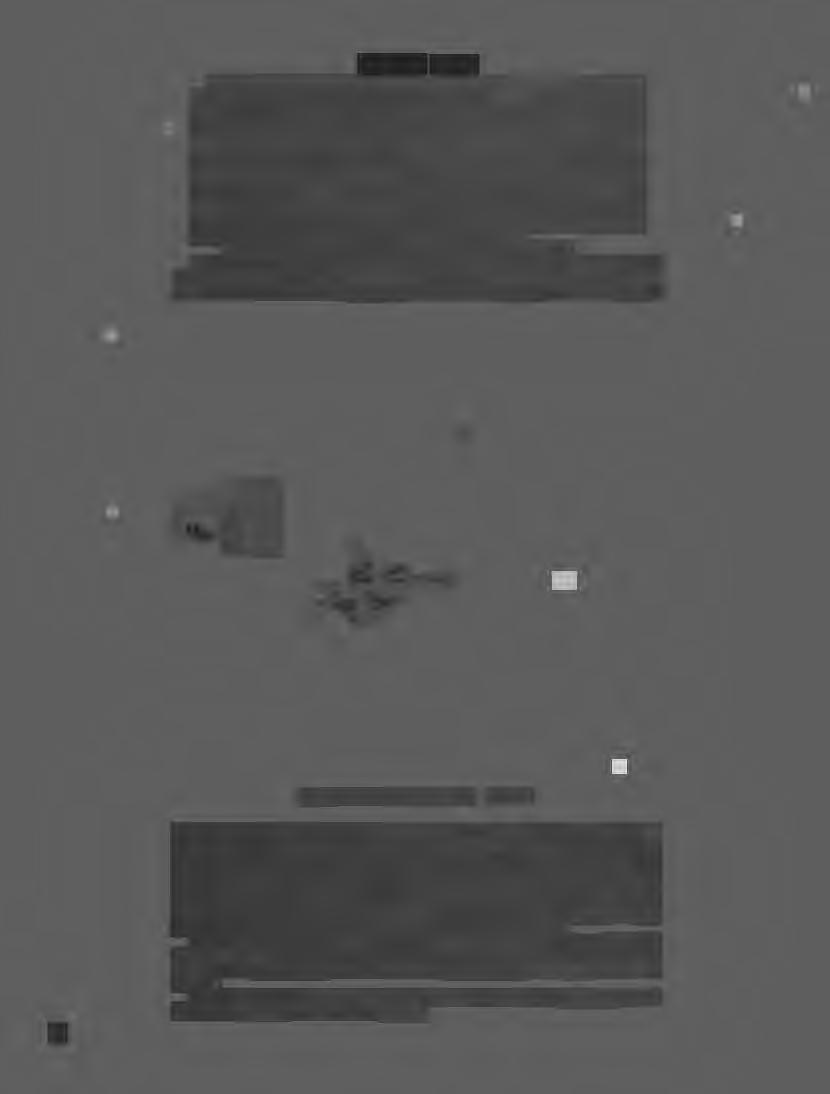
the country for the demonstration that morning. They were met by a small army of police in full riot gear, some wearing rubber gloves as a precaution in the event of bloodshed. As the rally progressed, there was violence: whenever the police felt that the demonstrators were getting out of hand, they would move into the mass, clubbing people with their sticks and dragging protesters off to waiting vans. ACT UP/Chicago formed a circle and bound themselves together with gaffer's tape. After a brief stare-down, the cops, some of whom were on horseback, charged into them. The protesters were clubbed and trampled on, but they were so tightly taped together that the police were unable to arrest them.
By the end of the day over fifty people were in jail, and many others had gone home with serious injuries. The national news devoted four seconds of film coverage to the event that night, and the following day The New York Times acknowledged it with only a three-inch column.
ACT UP is steadfast in its mission to work for the end of the AIDS epidemic. It is not about to be silenced, and it cannot be ignored.
14
Act-Up Demonstration, Maryland, 1990, © Brian Weil
ALFRED
It was three in the afternoon at the Waldorf Hotel. Alfred and I wore summer linen suits with ties as we sipped our tea and ate finger sandwiches and scones with jam. The room was filled with older women also having high tea. Some were accompanied by their young grandchildren, who sat impatiently, wearing their best clothes and sipping Cokes. The kids couldn't stop staring at Alfred, and it seemed to make their grandmothers noticeably uncomfortable.
One morning in the shower, four years before, Alfred had found a small purple spot on his leg. Now, his whole body and most of his face was covered with purple lesions from Kaposi's sarcoma. Two years before, an ophthalmologist had diagnosed him with a virus that affects the retina of the eye. It was now obvious (even to the child at the next table), by the way Alfred moved his cup to his mouth, that he was almost blind. Unaware of the surrounding stares, Alfred spoke about the seas_onal directions of the trade winds and their importance to the spread of Islamic culture from the Middle East to eastern Africa. Alfred was thirty years old, and inside his deteriorating body was trapped one of the most intelligent and inquisitive minds I have ever known. Alfred had been named after his grandfather, Alfred H. Sturtevant, the renowned geneticist, who worked with Thomas Hunt Morgan, Calvin B. Bridges, and Hermann J. Muller, researching the genetic trends in generations of the Drosophila fruit fly. Their discoveries won them the Nobel prize in 1946. Alfred's maternal grandfather had been the last colonial king of Burma. Alfred grew up in Washington, D.C., where his father had worked as curator at the Smithsonian.
At twenty-three, after graduating from Yale, Alfred moved to New York City and worked as an editor and art critic. He was tall and thin, with striking Eurasian features. He met another young man, a painter, and for years they had a passionate love affair. They ended the

Alfred, Self-Injecting Experiemental Drug, New York City, 1987, © Brian Weil relationship, only to come back together years later to support one another as each approached his own imminent death from AIDS. Entering Alfred's apartment, one walked through pathways defined by stacks of books and magazines. In his bedroom was a small shrine and a figure of Buddha. When taking care of Alfred, his mother would sit in front of the Buddha for hours and say her prayers. When she first found out that Alfred was sick, she asked a famous monk in Burma to make a jar of sacred honey for Alfred's health and healing. It had taken over a year for the monk to collect and bless the honey. Alfred kept it in a plastic honey-bear on his kitchen table.
Two weeks after our tea at the Waldorf Alfred entered the hospital for the last time. His Kaposi's sarcoma was causing bleeding ulcers in his lungs. He had also developed pneumonia. His doctors were having difficulty treating a rare form of disseminated tuberculosis that Alfred had recently contracted. Over the next few days a series of complications developed, and Alfred's sister realized that it was time to tell the rest of the family to come to New York as quickly as possible. The following day, a meeting was held with his family. The doctors explained that soon Alfred's lungs would not be able to oxygenate his blood, which could lead to heart failure. It was their opinion that it would be best not to intervene but to let him die. However, Alfred's signature on a "do not resuscitate" form would be the only way to stop the doctors' intervention. The family was now presented with the task of explaining this to Alfred.
The last time I saw Alfred he was lying on a gurney waiting to be moved to intensive care. He handed me one of the earplugs from his Walkman so together we could listen to an opera he had always loved. I remember holding his hand, and as we listened, he translated the story from Italian into English. This beautiful young man, with an incredible and lucid mind, was about to die. Two hours before translating this opera for me, Alfred had signed his own "do not resuscitate" form. Twenty-four hours later he was dead.
15

DOMINICAN REPUBLIC
In Latin America, due to societal attitudes and prejudices, few men feel comfortable acknowledging that they have sex with other men, and therefore there is a big demand for transvestite sex workers. AIDS prevention must take the form of creative, culturally sensitive education programs. One su.ch program, using transvestites as outreach workers, was implemented by the Academy of International Development in Santo Domingo. These outreach workers, trained to inform couples of safe-sex practices, visit areas frequented by sex workers, attach dildos to trees or to cars, using suction cups, and look for sexually active couples. They then supply the couples with condoms and demonstrate their application on the dildos. This seems to be the most direct method of reaching men of all sexual orientations. As for medical treatment in the Dominican Republic, if someone tests HIV positive in a public hospital, he or she will be thrown out, and the only hope is to be able to afford a private doctor. As AIDS is disparagingly identified in the Dominican Republic as a "gay disease," a person with AIDS is almost always shunned by his or her family as well.
16
Transvestite Safe-Sex Outreach Worker, Santo Domingo, Dominican Republic, 1987, © Brian Weil
THAILAND
Bangkok is considered by many to be the sex capital of the world. The city is full of Australians, Germans, and Japanese who come to Thailand on "sex holidays." Pat Pong Street is renowned for its young prostitutes and its acrobatic live sex shows. During the Vietnam war Pat Pong functioned as a popular rest and relaxation center for U.S. servicemen.
Prostitution has a long history in Thai culture and is found in every stratum of society. In desperately poor farming villages in the northern hills, men trade rice for the services of boys and girls. With literally hundreds of thousands of prostitutes throughout the small country, services range in cost from sixty U.S. dollars to forty cents.
The HIV risk is directly correlated to the price of the prostitute. A girl receiving forty cents per client in a working-class brothel might service up to three thousand partners over a year's time in order to make a living. Over 60 percent of sex workers at this level in Thailand are HIV positive. The female prostitutes are so often infected and reinfected with venereal disease that they have constant genital sores, as do the men who hire them. These sores are symbols of manhood among many young Thai men. The sores are also perfect vectors for the spread of HIV: infected men in turn go home and infect their wives.
On the other hand, the boys around Pat Pong who service men have one of the lowest rates of HIV in Bangkok. As in many other countries, the gay male community in Thailand has organized and educated itself. This is not the case, however, with the lesbian community. Although this is generally a tolerant culture. the nonjudgmental quality of the Thai
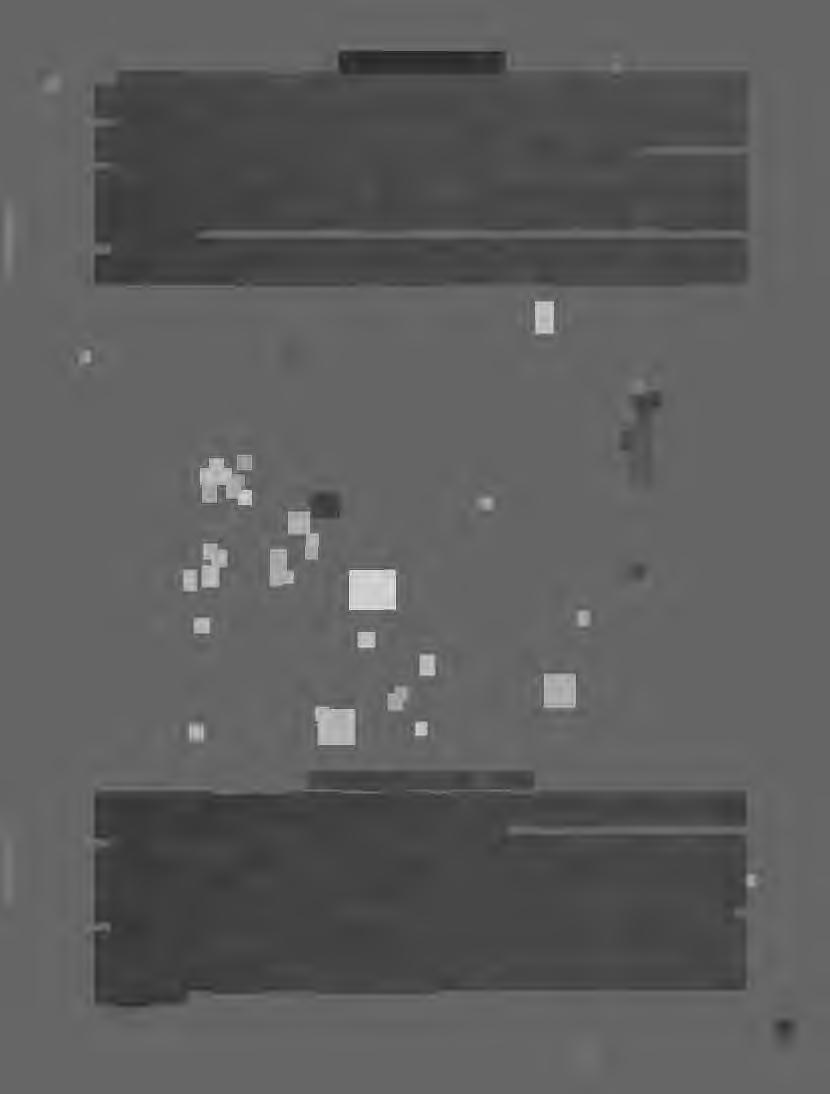
Go-Go Bar, Bangkok, Thailand, 1989, © Brian Weil people ends when it comes to sex between women. When I was there, the one lesbian club in Bangkok had just been closed down. Now lesbians have to go to the same places that men go to in order to pick up girls. Therefore the risk of HIV infection for lesbian women is much higher in Thailand than it is elsewhere.
Heroin is the other major factor in the spread of AIDS in Thailand and was probably the vehicle by which the disease first entered the country. Because of its proximity to the Golden Triangle, Thailand has some of the cheapest and purest heroin in the world. In New York City heroin is 3 to 5 percent pure in Thailand it is 90 to 95 percent pure. Because the heroin is so pure and so inexpensive, Thailand is full of addicts from all over the world. It is through these foreign addicts sharing needles with the large number of Thai drug users that HIV infection has spread throughout the country. In some areas of urban poverty the addiction rate is 40 percent of all teenagers, 50 percent of whom are already HIV positive.
AIDS in Thailand is now at a unique stage. Although there are hundreds of thousands of people who are HIV positive, there have only been thirty-four reported cases of full-blown AIDS as of 1989, when these pictures were made. With the long dormancy period before symptoms appear, and the fact that the AIDS virus was relatively recently introduced in Thailand, there have not been enough symptomatic cases to date to alarm the population. Epidemiologists foresee the possibility of 1Oto 15 percent of the Thai population becoming infected if serious intervention and AIDS education does not begin soon.
17
HAITI
On the road to Petionville, in Haiti, a large hand-lettered sign states: "AIDS is not an incurable disease. Dr. Daniel C. Claude." An arrow points down into a ravine with a cluster of houses at the bottom. I found Dr. Claude sitting in a cinderblock house just large enough to accommodate a double bed and large color TV. It was two in the afternoon, and he was watching magic shows from France. Dr. Claude claims to have cured hundreds of people with AIDS. He believes that AIDS has ten stages of illness, and if he meets a patient before stage seven-and-a-half, he can cure him or her. Dr. Claude can undoubtedly treat some of the illnesses associated with the virus with his various roots, weeds, and barks. His approach to the treatment of AIDS is not unlike that of Western medicinetreating the symptoms, not the virus. Dr. Claude had a file of negative HIV results from the Cornell University research program in Portau-Prince. These were people Dr. Claude claimed to have cured, although there were no corresponding initial positive test results. Haiti is the poorest nation in the Western Hemisphere: 50 percent of its population is unemployed, with no hope of finding work; 60 percent of the country has no access to clean drinking water. According to doctors Glen Margo and John-David Dupree, Haiti also has "one of the highest per capita incidences of AIDS in the world. Though Haiti had reported nearly 3,000 cases as of December 1989, its surveillance system has been unable to keep up with new cases; thus, no new cases have been reported since then. Mother Teresa's two 'Homes for the Dying'-one pediatric and one adult-are filled with HIV-infected children and adults, many of whom simply don't have any other place to live." The country is an odd combination of the remains of French colonialism and a dominant African culture. A strong belief in voodoo and primitive medicine is still prevalent in most of the population. It is not uncommon for Haitians living in the
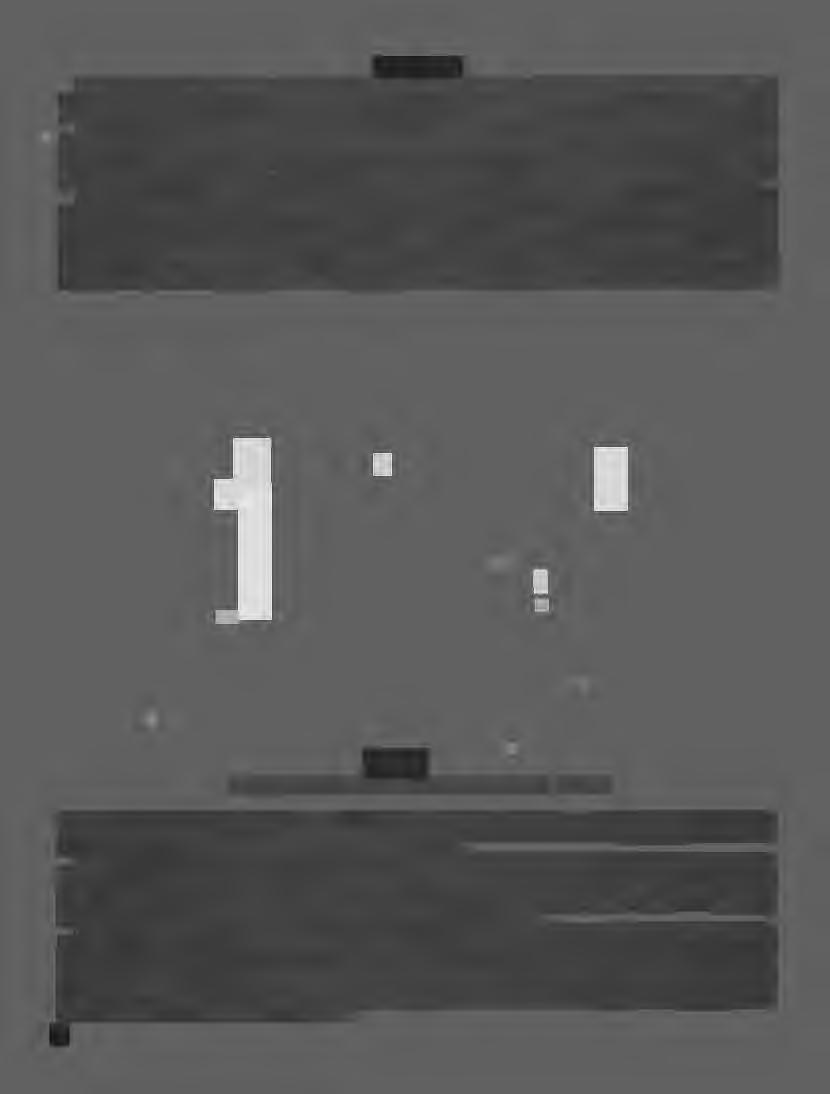
Unite9 States who become sick with AIDS to return to Haiti to seek the services of a medicine man or voodoo priest. Yet doctors Margo and Dupree say that "none of the cures or vaccines" put forth by these traditional healers have been "adequately documented to warrant any global or regional scientific optimism about their effectiveness."
Virtually no Western medicine is available to most of Haiti's population, and whatever medicine does exist is always questionable. The U.S. Food and Drug Administration regulates only drugs for U.S. consumption. Many U.S. drug manufacturers sell out-of-date or improperly manufactured drugs to Third World countries. The use of these drugs is rampant and deadly. In Haiti drugs are usually bought on the black market and are taken to a picuriste, or injection doctor. The picuriste is paid to inject the drug into the patient. By using contaminated needles, the picuristes also contribute to the spread of AIDS in Haiti.
Early in this epidemic, Haitians in the U.S. were identified as one of the largest "at-risk" groups. The U.S. government included Haitians on a list of people who should not give blood because of the possibility of their being HIV infected. This began a wave of discrimination similar to that focused on gay men and IV-drug users. Haitians suffered from this stigma for ten years, until 1989, when they began to fight back. In New York City Haitians used the network of Creole newspapers and radio to organize one of the largest AIDS marches the city has ever seen. Just as rush hour began, thousands of Haitians walked over the Brooklyn Bridge into Manhattan, shutting down one of the busiest routes in and out of the city and closing most of lower Manhattan. Two days later, the Surgeon General removed Haitians from the list of at-risk blood donors.
Dr. Claude, Medicine Man, with His Cure for AIDS, Petionville, Haiti, 1988, © Brian Weil
18
BRIAN WEIL
•• Born in Chicago, Illinois, in 1954, Weil was introduced to photography through his younger brother. By the time he was seventeen years old, he had completed his first documentary photography project about a home for retarded adults. Weil has been exploring the documentary form since that time. He lives and works in New York City.
For his work on AIDS Brian Weil received a Supplementary Award from the W. Eugene Smith Fund in 1990. He has been supported by: an Individual Artist Project Grant from the New York State Council on the Arts, and sponsored by EXIT ART, New York City, 1989; Art Matters, New York City, 1988 and 1986; Lew Baskerville; Patti Cummings of the Nathan Cummings Foundation, Inc.; Dr. Glen Margo; Ann Philbin; and Eel co Wolf. Brian Weil is a recipient of a National Endowment for the Arts, 1984, and a Creative Artist's Public Service (CAPS), 1980, Fellowship.
His solo shows have been seen at Moderna Museet, Stockholm; Sweden, 1989; Urbi et Orbi Gallery, Paris, France, 1988; C.E.P.A., Buffalo, New York, 1983; and Artists' Space, New York City, 1980., His group exhibitions include: Perspektief Center, Rotterdam, Holland, 1990; Images Gallery, Cincinnati, Ohio, 1990; Metro Pictures, New York City, 1981; and Castelli Graphics, New York City, 1980. Weil's work has been collected by: The International Center of Photography, New York City; Moderna Museet, Stockholm, Sweden; Academy for Educational Development, Washington, D.C.; and The International Museum of Photography at George Eastman House, Rochester, New York.
Text excerpts are from the book Brian Weil: Everv 17 Seconds. A Global Perspective on the AIDS Crisis, published by Aperture Foundation, Inc., 1992. Permission for use of text and photographs courtesy the artist and Tina Summerlin.
BROCHURES
Two brochures, both titled Brian Weil: The AIDS Photographs, are available for free from the Center for Photography at Woodstock.
BRIANWEIL
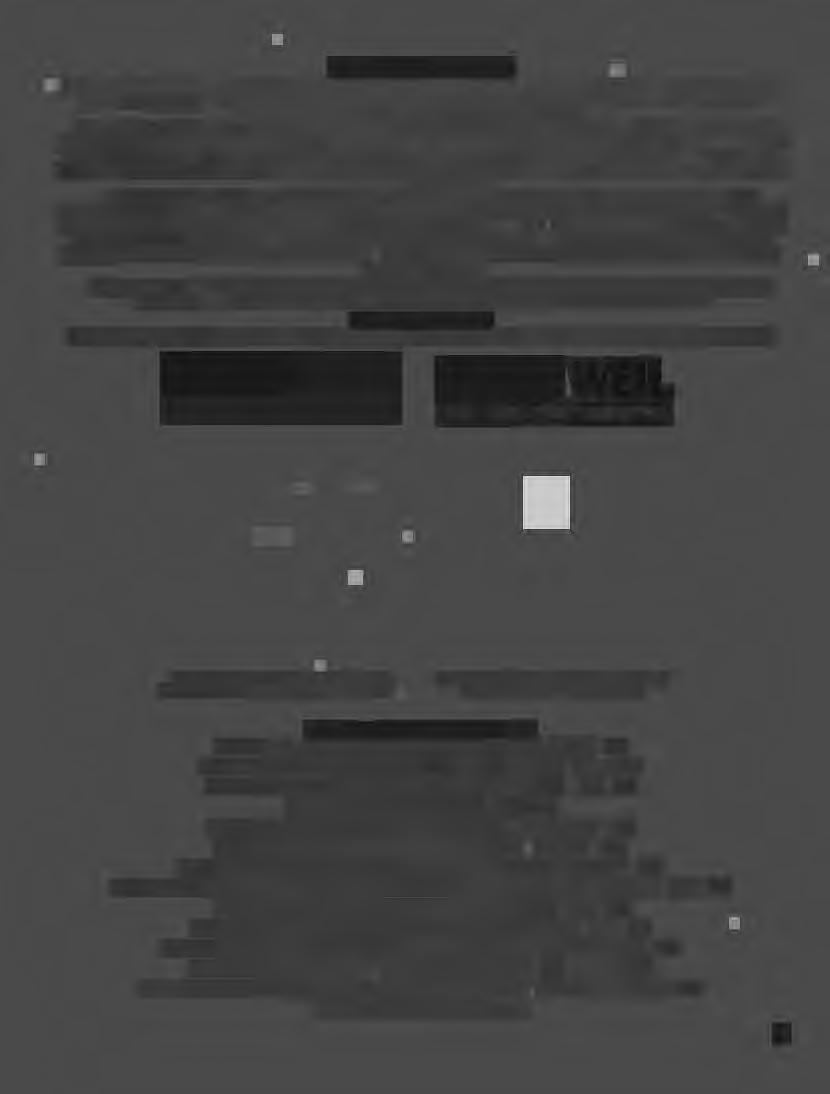
TOURING SCHEDULE
Williams College, Williamstown, Massachusetts, December - January 1989
The International Center of Photography, New York, New York, April -J une, 1991
The Wexner Center for Contemporary Art, Columbus, Ohio, March -May, 1992
The Forum, St. Louis, Missouri, April - May, 1992
The Friends of Photography, San Francisco, California, July - September, 1992
Atlanta College of Art Gallery, Atlanta, Georgia, October -December, 1993
Milby High School Sponsored by Fotofest, Houston, Texas, November -December, 1993
Nelson Fine Arts Center, University Art Museum, Arizona State University, Tempe, Arizona, February -April, 1994
The Photographic Museum of Finland, Helsinki, Finland, March -April, 1994
The Center for Photography at Woodstock, Woodstock, New York, April -June, 1994
Anderson Gallery, Virginia Commonwealth University, Richmond, Virginia, June - August, 1994
Vancouver Art Gallery, Vancouver, British Columbia, November 1994 -January, 1995
Center for the Visual Arts, Metropolitan State College of Denver, Denver, Colorado, July - August, 1995
(Two exhibitions travel simultaneously)
Interview with Brian Weil by Willis Hartshorn, the International Center of Photography, New York, 1991.
An Education Guide to the Exhibition HIV and AIDS, the International Center of Photography.
19
ANNA OPPERMANN: FOR
ME ART IS A MEANS OF DEALING "WITH LIFE.
Dr. Gisela Hossmann

OnMarch 8, 1993, Anna Oppermann succumbed to cancer shortly after her fifty-third birthday in Celle, a small town in northern Germany. Without a doubt, she ranked among the bestknown artists of the German art scene in recent years and had received many
and unprecedented installations that changed and grew over the years. Oppermann's imagination and her extraordinary analytic intellect enabled her to concentrate on her art, even during her serious illness. Did this effort give her the quiet hope of conquering
1968 she completed her studies. From then on she worked as an independent artist, primarily in Hamburg where her first studio was located. From 1982 to 1990 she taught as a Professor of Fine Arts at the University of Wuppertal in the department of communications de-
national as well as international awards. Starting with conceptual art in the sixties, she created a body of work that cannot be categorized in any of the traditional art styles, because it comprises all artistic disciplines: painting, drawing, photography, but also self-composed and found texts, collected mementoes, and objects of everyday life. She combined all of this into unique 20
her disease? This question remains unanswered. Her life's work came to an end with her all-too-premature death. However, the complexity of her legacy will motivate many art-lovers to reflect on this extraordinary artist.
Anna Oppermann was born on February 18, 1940, in Eutin. From 1962 on she studied at the Academy of Fine Arts and at the University of Hamburg. In
sign. Starting in 1990 until her death she conducted a class for painting and multi-media design at the Academy of Fine Arts in Berlin in the fine arts department. Opperman's second studio, which was her home for the last four years of her life, was situated in Celle. Her first marriage produced a son. She lived with her second partner for twenty years.
.c.-~-·-:;::.,, -·~·~ ......v-~
Anna Oppermann, 1984, vor ihrem Ensemble Probl.emlosungsauftrag an Kunstf.er (Rauprobl.eme) 1978-1984. Ausschnitt. Aufbau: Kunstverein Hamburg, 1984. (photo: Elke Walford).
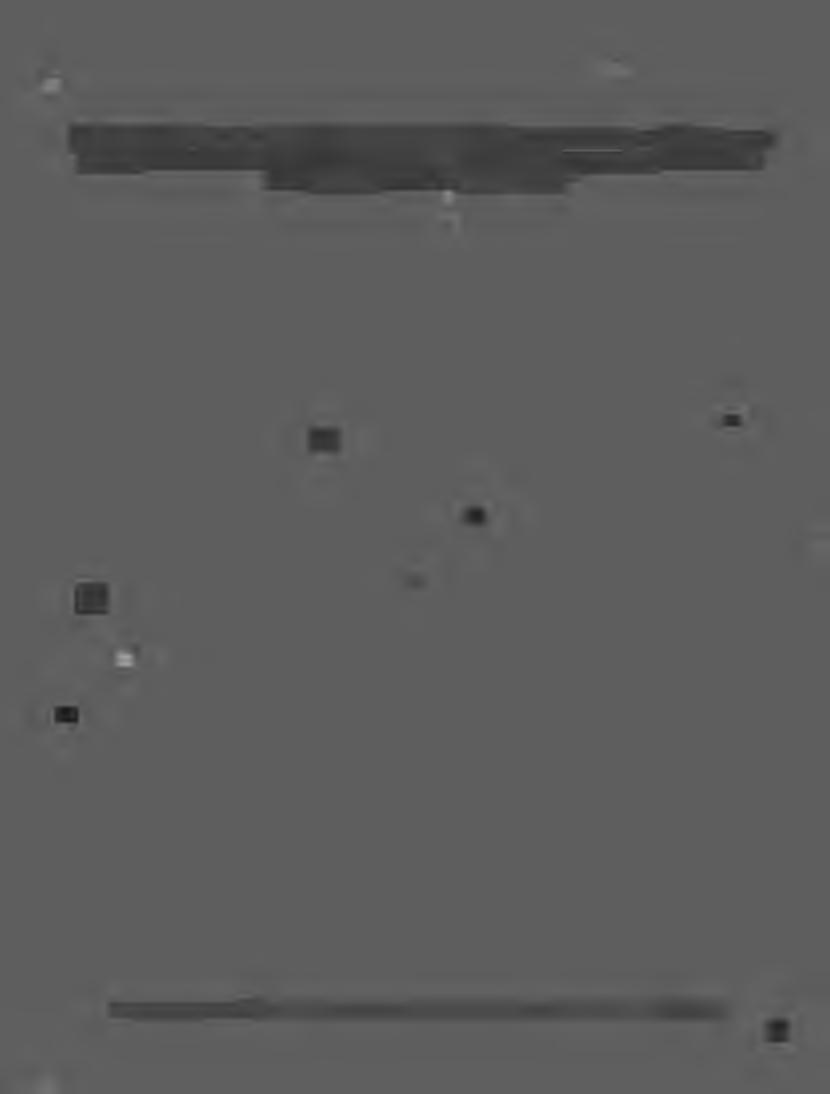
"Oppermann imagination and intellect enabled her to concentrate on her art, even during her serious illness. Did this effort give her hope of conquering her disease? This question remains uµanswered."
'
21
Anna Oppermann, Ensemb/,e Ol auf Leinwand, 1981-1992. Aufbau: Nationalgalerie Berlin, 1983. Gesamtansicht. (photo: Elke Walford).
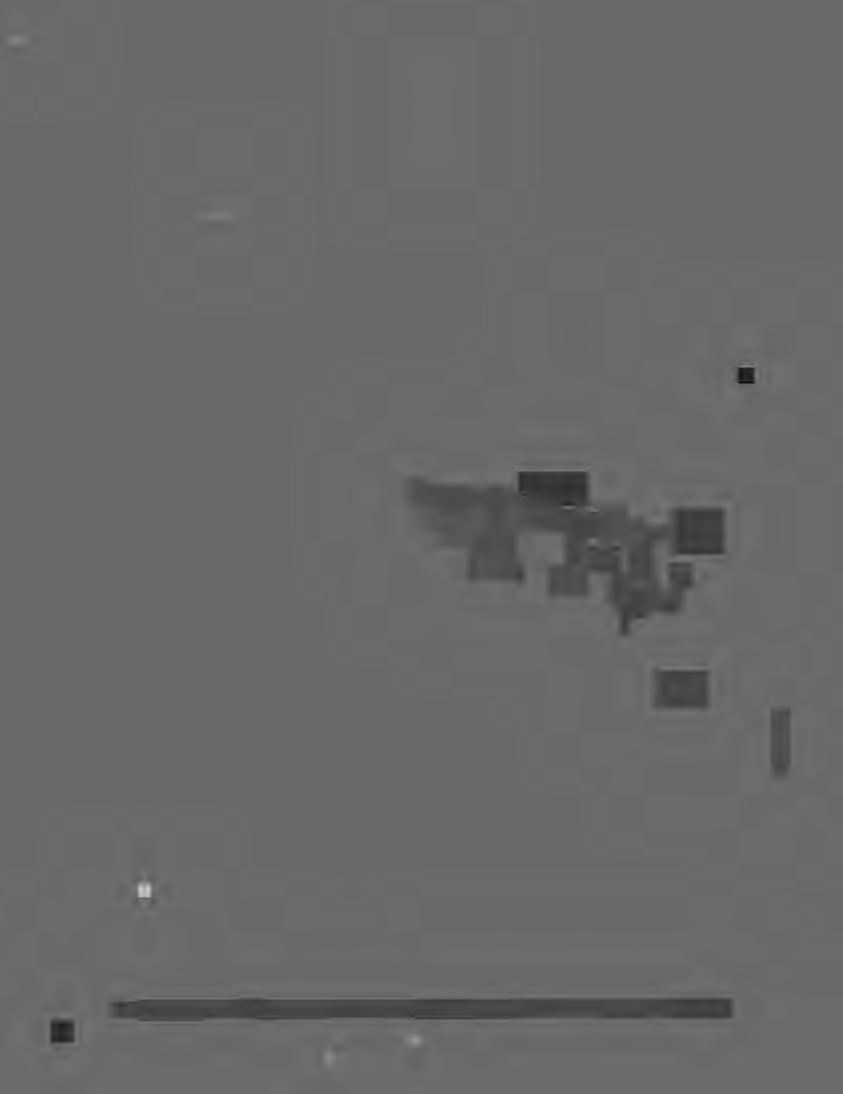
22
Anna Oppermann, Ensemble Ol auf Leinwand, 1981-1992. Aufbau: Hamburger Kunsthalle, 1992. Ausschnitt. (photo: Anna Oppermann).
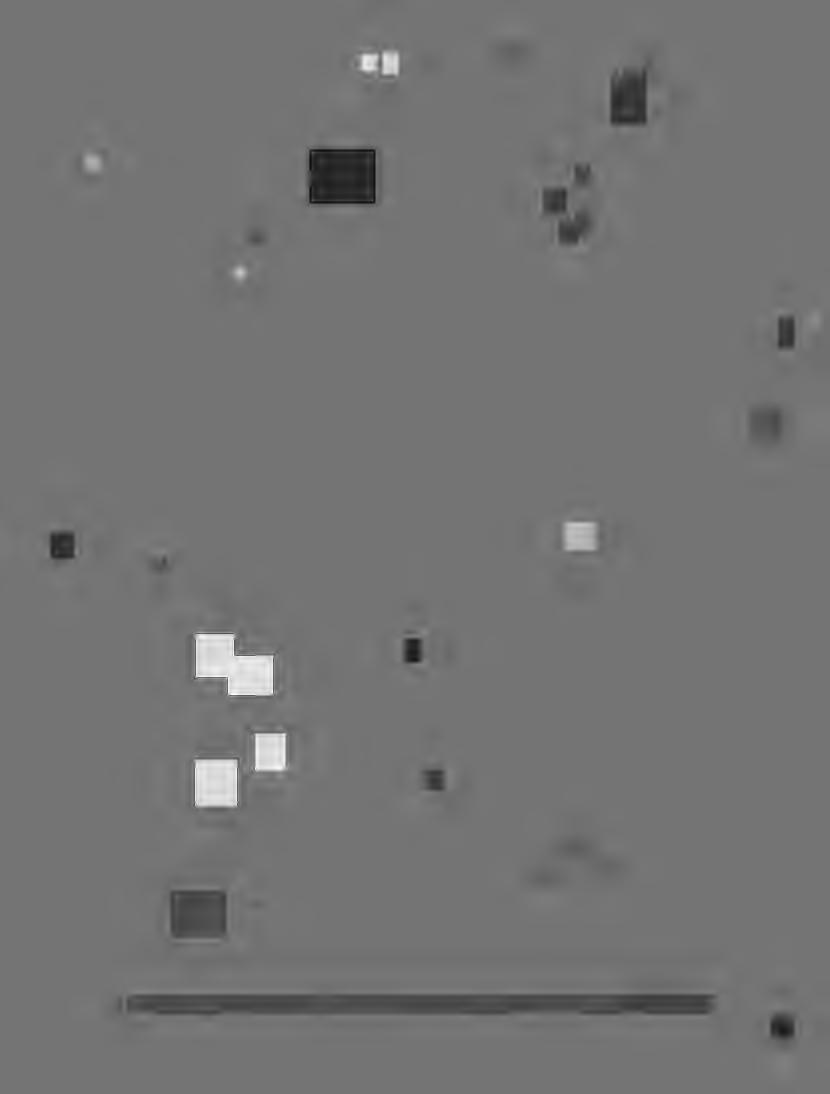
23
Anna Oppermann, Ensemble Potriit Herr S., 1969-1989. Aufbau: Biennale Venedig, 1980. Ausschnitt. (photo: Anna Oppermann).

From the beginning of her independent activity, the status of women was one of Anna Oppermann 's principal interests, especially that of the female artist in contemporary society. Her life and her art could not be separated. They were not distinct spheres of interest, rather, they were in a constant state of interaction-not always in harmony, but always resulting in a fertile dialogue. Just as the flow of life never ceases, in her opinion a work of art could never really be completed or reach a singular final state. In keeping with this view, she did not create a conventional body of work consisting of individual, autonomous pictures, drawings, or sculptures. With a few exceptions, mostly at the beginning of her career, she created "open" works of art that consisted of numerous individual works arranged into a single entity in terms of content and spatial orientation but that never represented a "finished" solution. Just as humans grow and change during the course of their lives, in the concrete sense as well as by analogy, so too did Anna Oppermann's works continually change. They proliferated from the wall into the room, from the two-dimensional into the three-dimensional. During the course of their creation they became a diagram of a life in the world: "From the relatively simple to the relatively complex, from the private to the general. " 1
Anna Oppermann always maintained this method of allowing a body of work to develop slowly. Quick artistic results were not important to her; rathe1· she focused on the slow process of expansion and transformation. Even during the last years of her illness, she consistently followed the path she had taken. Her motto was: "For me art is not primarily a marketable wall decoration; rather it is the means to manage life; in more simple words, it is a way to get a handle on (to come to terms with) problems, to resolve conflicts. " 2 In her conceptual and practical work she repeatedly asked the essential questions about human existence, ranging from birth to death: "why, how come, how am I, how are the others ... ?" 3 These questions addressed very real situations, but they also had a purely meta24
physical meaning.
From 1968 on, the first space-filling ensemble (the title was given by Anna Oppermann), the Spiegelensemble (Mirror Ensemble), began to grow. In 1972 it was presented to the public at the Hamburger Kunsthalle for the first time. Prior to that she had been exhibiting pictures, not daring to show her ensembles. Until her death, about sixty of these large and voluminous works were created.
The artist provided the following commentary on the work: Ensembles are "spatial arrangements consisting of drawings, objects, found objects, photos, photo canvas, slide projections and other bits of information, usually quotations from various disciplines. " 4 Elsewhere she writes: "By ensembles I mean the documentation of certain procedures in exercises in perception and/or recognition. The construction of an ensemble is the presentation of many efforts to recognize a piece of reality, to evaluate, and to get a grip on a problem." [ Oppermann knew well the work of Kurt Schwitters. He showed his Merzbau at the Sprengel Museum in Hannover (a reconstructed permanent installation); she has a permanent piece on view in the same museum. -Editor's note.]
Documentation means visualizing, determining traces that have been left, and aiding our recollection of psychic processes on varying levels of consciousness and in different frames of reference. In doing so, we create bases for investigation (by determining shortcomings and making them known), with a view to possible corrections and modifications, which requires a relative openness of the arrangement .... And so, proceeding from a single point (from the relatively simple to the relatively complicated), the circle of interest grows wider and wider. " 5
Photography plays an important role in her spatial environments: the artist uses the medium as adjuncts to memory and associative triggers. For the unprepared viewer of the unusual work, the photographic documentation of the ensemble over the course of several years enables an understanding of the on-going process of creation in stages. Large
and small black-and-white photographs provide overviews and details of the ensemble's previous stages. "Photos of arranged objects, sketches, texts, pictures and photos of photos of objects, sketches, texts, pictures and photos of. etc. " 6 are used in the overall work as elements equivalent to real objects, original drawings and original pictures, thus expanding the spatial, formal and thematic dimensions of the work of art. The artist uses large photographs to emphasize important texts, thoughts, and images and summarizes entire complexes of pictures with small photos. When a fully set-up ensemble-there are some that reached a girth of ten meters width, seven meters depth, and six meters height-is reduced to a surface of a few square centimeters by a wide-angle lens, details are obscured. The result is an abstract picture, whose origin can no longer be read without knowledge of the original.
Black-and-white photography is the raw material for the photograph/canvases incorporated into the ensembles. The chosen motif is projected onto the canvas and then developed. Anna Oppermann used this canvas to paint with oils or acrylics; draw with pencils or colored markers; write thoughts, quotes, or simple sentence or word fragments. The photograph/canvas becomes the carrier of information that is particularly important to the artist. The motif of choice is usually a detail of the ensemble, frequently an emphasis of the "primal cell" that was the conceptual source and real starting point of the overall work. "There is always a real object at the center of the ensemble, in the beginning a found natural object, e.g. a leaf (later, humans, situations, conflicts, problems). " 7 Each ensemble has associated with it a leaf (beech, chestnut, lime) or a fruit (cherry, plum, etc.).
In the ensemble titled Ol auf Leinwand (Oil on Canvas), created between 1981 and 1992, which is permanently installed in the Kunsthalle in Hamburg, the theme of the w01·k presented is clearly understood.
The detail photograph reveals the principles of artistic action:
• The theme is an arrangement of

25
Anna Oppcrmann, Ensemble Anders sein (lrgendwie ist sie anders .. .), 1979-1986. Aufbau: Biennale Venedig, 1980. Ausschnitt. (photo: Anna Oppermann).
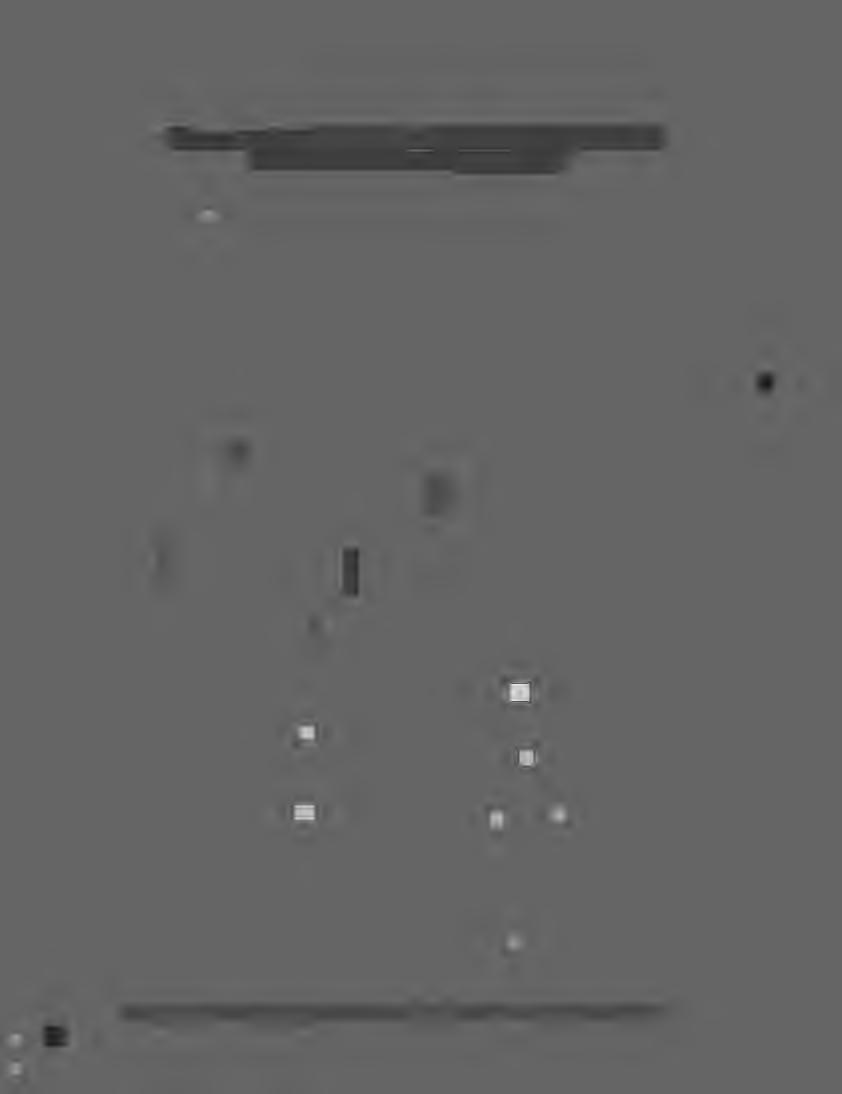
"For me art is not primarily a marketable wall decoration, rather it is the means to manage life. "
26
Anna Oppermann, Ensemble Pathosgeste, 1984-1990. Aufbau: Worpswede, 1987. Ausschnitt. (photo: Anna Oppermann).

objects, consisting of a table with a canvas, small oil bottles, rags, and a design painted in oil; • on the wall next to it is a photograph canvas with the original motif, the written concept, and individual thought fragments in an expanded context.
The real object, the photograph of it, and the photograph/canvas, summarize the three elements of the arrangement and serve as a starting point for further reflections on the selected topic. From here on, the ensemble grows profusely into the room.
The photographs do not serve just as the backdrop for the photograph/ canvases, rather they are frequently projected directly into the ensemble as positive images, as in the ensemble Ol auf Leinwand. Overall and individual views, pictures documenting various stages and details, are projected onto the wall in small ornamental gold frames and equated with precious paintings. The simple slide intentionally becomes an ironic jewel.
Polaroid photographs are another photographic element used by Anna Oppermann. Polaroids were initially intended for quick, uncomplicated documentation or unforeseen situations during set-up or take-down of exhibits. But they frequently also serve as templates for drawings. Because the Polaroids have a small format and are usually of less significance in terms of their content than the motif selected for drawings, large-scale photographs or large-scale canvases, the artist places them primarily at the margins of the ensembles. Thus their artistic rank in the overall complex of the work is clearly defined.
Anna Oppermann explained the importance of photography for her artistic work as follows: "The photo delimits, records and fixes those things that can change location within the actual structure; it summarizes, clarifies emphasis, lets other things become unrecognizable or abstract for outsiders through its reduction of scale. It transforms space into a surface and facilitates or forces distance to the ensemble (topic), which ( as long as it is arranged in space) can be entered in the true sense of the word. " 8 The camera becomes a tool for
the artist comparable to the painter's brush or the draftsman's pencil. Photography becomes a substitute for painting.
Oppermann consistently followed the actions described above in the design of her ensembles. In addition to real objects taken from nature or everyday objects, she used humans in her ensembles from time to time (En~embles mit Dekor-iiber den Umgang mit Menschen, wenn Zuneigung im Spiel istl Ensemble with Decoration-on Interactions with Humans, when Affection is a Factor, 1969-1990; Portriit Herr S./Portrait of Mr. S., 1969-1989, Ferien mit Alex/Vacation with Alex, 1979). Occasionally self-portraits of the artist can be found in the environments (Anders sein-lrgendwie ist sie anders/ Being Different-Somehow She Is Different, 1979-1986, Pathosgeste!Gesture of Pathos, 1984-1990). An entire collection of photographic self-portraits, which were discovered after her death, gives rise to the assumption that the artist was probably planning a larger work in the 1970s, with and about her own changing physiognomy, because her own and other people's faces always interested her. But she shied away from revealing the intimacy that frequently emanates from these faces.
Her last two large-scale ensembles and a number of other smaller works show how the complex of problems was continually evolving from the personal to the general in the 1980s. Titles such as Mythos und Aujkliirung/Myth and Enlightenment, 1980, and Masse und Macht/Mass and Power 1987-1988 point to extremely complicated themes.
Many of her ensembles have been exhibited at important international shows, among them the Biennial in Paris (1975), the Biennial in Venice (1980), and Sydney (1984), as well as Documenta 6 (1977) and Documenta 8 in Kassel (1987). Entire rooms are devoted to Anna Oppermann at the Kunsthalle in Hamburg and the Sprengel Museum in Hannover. Room installations are being set up this year still at the Von Der Heydt Museum in Wuppertal and at the Museum of Contemporary Art in Sydney, Australia. The voluminous estate is to be scientifi-
cally catalogued and documented in the coming years in order to protect Oppermann's materials (which are often difficult to preserve) and render them accessible to an interested audience. A group of art historians and scientists in Hamburg is dedicating itself to this challenge.
Notes:
1. Anna Oppermann, rn: "Das, was ich mache, nenne ich Ensemble (I call what I do ensembles);" in the catalogue Anna Oppermann, Ensembles, 1968-1984, Hamburg and Brussels, 1984, p. 28.
2. Ibid.
3. Ibid.
4. Anna Oppermann, in: MomentbildKunstlerphotographie (Instant Pictures, Artist's Photographs); exhibition catalogue, Kastner-Gesellschaft, Hannover, March/ April 1982, p. 136.
5. Anna Oppermann, "Was ist em Ensemble-Zur Methode (What is an Ensemble-About the Method); in Kunst-forum International, vol. 28, 4/78, p. 148. (English translation by Margret Berki.)
6. Anna Oppermann, 1982, p. 135.
7. Ibid., p. 28.
8. Anna Oppermann, "Text im Ensemble und Funktion des Fotos in der Methode (Text in the Ensemble and Function of the Photograph Within the Method);" in Kunstforum International, vol. 33, 3/79, p. 128.
- © Gisela Rossmann 1994.
GISELA ROSSMANN studied modern languages and the history of art. She wrote her thesis about the work of the German-American painter, writer, and film-maker Hans Richter. For several years Rossmann worked for the German Cultural Center/Goethe Institute abroad. Since the early seventies she has worked as a freelance author and filmmaker for German radio and television. Her specialty is twentieth-century art. Rossmann lives near Cologne.
Translated: Silvia Zehn, Interspeak Translations, Inc., New York, NY.
27
PHOTOGRAPHY AND THERAPY: MEMORY AND IDENTITY
Rosy Martin
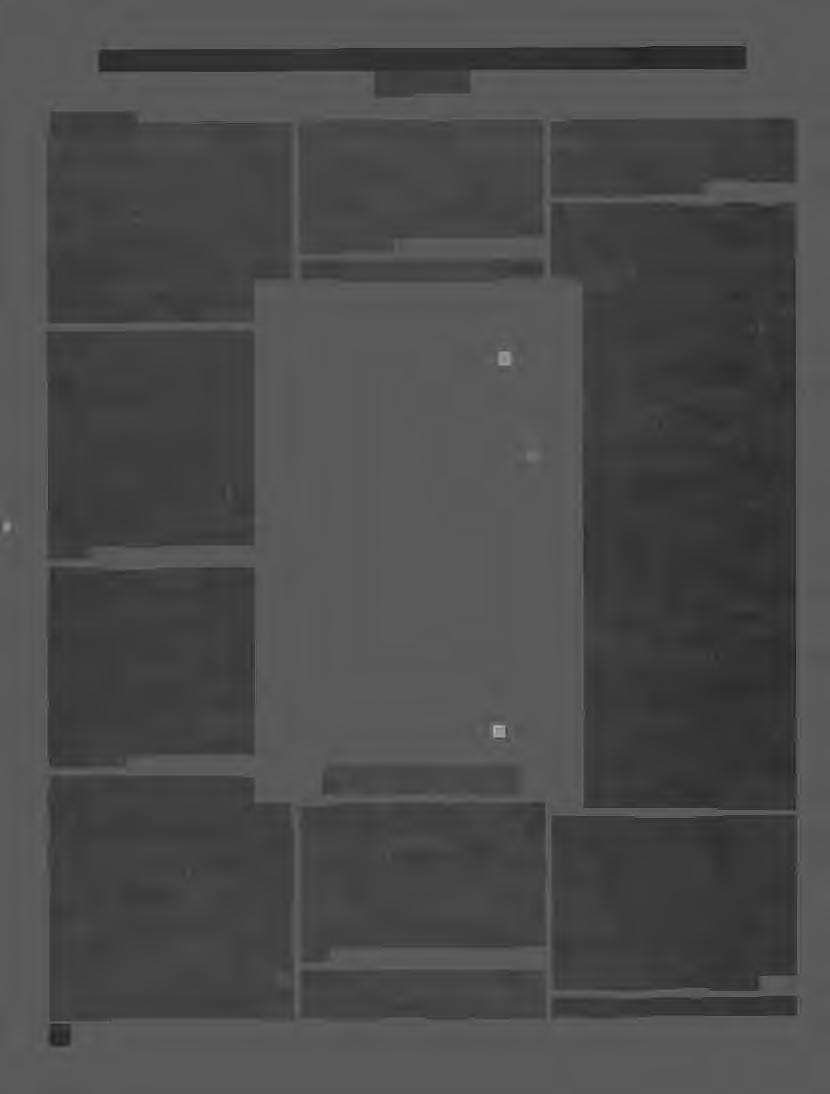
Rotographic therapy can be seen as an extension of self-portraiture: two people work together to explore the identity of the sitter/director/subject who is in front of the camera. This is a radical departure from the usual power dynamics between photographer and sitter, in which creativity is credited only to the photographer. What if the artist's model got up off the couch, and determined how she should be represented? Who were Monet's models, and how did he come to share such intimate moments with them? What if Avedon's models could tell their own stories?
The work produced in photographic therapy is always jointly authored, to acknowledge the contribution that both sitter/director and photo therapist make to the process. To separate ourselves from a notion of "fine art" or "documentary" practice, Jo Spence and I have called our work "domestic photography." This highlights the way in which the work expands, explores, and explodes the family album mode of address.' It's as if the pages suddenly parted to show the power dynamics, conflicts, traumas, and pains which lie masked within.
I always encourage clients to find the props and clothes that have resonances for them, offering suggestions of potential sources. Giving serious consideration to the objects adds to the process. It's not just a question of historical accuracy, but also of what is apposite. I give my clients access to my extensive hoarded collection and offer up additional props during the sessions, as appropriate. As the scenario opens out, feelings surface, and new needs arise.
In working with Sue Isherwood a theme developed around the book. In re-enacting her great-great grandmother, Sue wanted a bible as a prop, to signify the importance of religion, and the authority and demand for unquestioning obedience that it represented. However, among my enormous store of potential holdings, I didn't have a bible. What I did have, however, was an old hard-backed Concise Oxford Dictionary. I drew a cross on the cover in gold paint, so it could stand in for a bible. This proved a fortuitous substitution. In talking through the images, in counselling sessions after the photographic therapy session itself, the language of the bible emerged as important to Sue. The bible embodied "holy
writ" and writing for her was "the word made flesh."The dictionary was the defining/confining of this "flesh," which within patriarchy she found both seductive and oppressive. So the dictionary, for Sue, was her bible, her frame of reference, indeed her "authorized version." Having one prop which encompassed all these connotations was highly relevant.
As with any therapeutic technique, the best
on different therapeutic approaches, both for my own self-awareness, and to make available an ever-enlarging repertoire of techniques and strategies to the people undergoing my treatment.
I prefer to work with women, who are in therapy or who have done a lot of emotional work on themselves. It is useful to see photo therapy as part of a healing process-used in conjunction with other long-term therapies. It is a very powerful method for shifting self-perceptions, and examining parts of the self, and working toward self esteem. However, any claims to produce a cure are highly problematic, since old patterns go deep; it is more helpful to see the photographic therapy work as part of a process of self discovery-of self as and in process. When I start working with a client, I give a long counselling session first. During this, the individual scans their life, while I offer active listening skills, in an attitude of interest and relaxed concern, and reflection where appropriate. I thus enable them to untangle their material, finding key themes, feelings that underlie old belief systems, and taking them back in time to when these patterns were first set up. For example, I ask: "Do you remember other times when you felt like this, when you were younger? Tell me about them, as if they were happening now." I use family album pictures and exploratory questions, to find out what lies behind the "screen memories," expanding the stories in the present tense. I am also learning the roles that I will need to take up in the photo therapy sessions. I might choose to use gestalt techniques, asking her to suggest two key roles, and we have a conversation between them. It is always more powerful to reflect back the client's own words-her own way of telling-since these will have the most significance.
way to learn is by being a client. Jo and I originated our style of photo therapy in an exchange relationship, using the co-counselling model. 2 We are now both expanding our practice by working with other clients. I am in twice-a-week long-term therapy. I also have supervision, to hone my skills, and separate myself from any restimulation that can occur when clients' memories have distressful resonances for me.
My work is always client-centered, and client-led, and my therapeutic style is eclectic. I regularly attend a range of workshops
Some clients may come with clear ideas about what they want to work on; others have more disparate needs, but tracing patterns in the client's history is useful in both cases. The person always has the power of veto, can always decide that.they are not ready to do the work. The first counselling session(s) are also essential to build up a sense of safety and trust, the knowledge that the client can bring what ever they need to the session, that they will be skillfully heard, accepted, and never judged.
When key areas to work on have been iden-
28
In mirroring my father's anger I see my own! Rosy Martin in collaboration with Jo Spence.

tified, clients decide which to choose. I guide them as to how difficult (in terms of feelings) a piece of work might be, and aim to include a range of feelings within a session. I start with something easy as a warmup, moving into the painful material, and end on something releasing, affirmative, celebratory and playful. Ending the session on a high note, and then bringing them back to the "here and now," allows clients to leave feeling energized.
Photo therapy is a very powerful means of making "the shadow side" visible. Making celebratory images is more problematic (in photographic terms), since most of the family album is full of that anyway. However, the client needs a marker of possible destination(s), a different strategy which they could choose to adopt, to emerge from deep distress, and to affirm themselves.
We then work out ways of making the feelings visible. Family mythologies, stories told about us, old family album photographs, gestes, fragments of memories, enacting the roles of family members, authority figures, stereotypes or archetypes-all these offer possible routes. How much each gives to this process depends on how used the client is to reading and using images. When working collaboratively, it's impossible to separate out who did what in retrospect, since ideas build upon one another, one idea sparks another, and the creative process is about exchange, visualization, and sudden intuition.
A photographic therapy session is hard work, emotionally, intellectually and physically. The technical aspects need to be dealt with by the photo therapist, so that they don't interfere with the session, while offering choices to the sitter as to how she wants to be represented. I do add to the process, by experimenting with framing, offering different kinds of lighting, shooting from different points of view, and so on. But it's always up to the individuals to say whether or not particular techniques are appropriate, and whether the resulting images work. The role of the photo therapist is always to give permission, to encourage the client to unblock, and to be playful. I am an intermediary, aiming to make an image of a feeling from a particular moment in someone else's memory.
In showing photo therapy, there is an inherent dichotomy between the private process of personal self-exploration and the act of public display. When I have been the sitter/director I have, at times, felt pulled between the roles of client in a therapeutic process and cultural producer. This was not highlighted for me when Jo and I first started working together. As we playfully explored ideas and issues, I was unaware of any destination for the pictures produced beyond
my proliferating family album. I revelled in our newly-found methods for getting behind "screen memories," and examining my life from my point of view. Taking up the positions of my mother, my father, myself as a child, was brim-full of personal revelations, and insights. 3 •
Once we had chosen to go public with the work, and I had learned to separate myself from the images of fragments of selves on the wall, I was able to stand.back and appreciate what a powerful communicative tool we had developed. Yet to be in the client position, it is necessary to feel safe and secure, and to be assured of confidentiality. This is fundamental, to enable the client to be willing to take risks-it is a basic principle of therapy-and is vital in photo therapy, since clients are recognizable, and many viewers seek the "truth" in images. Their approach ignores how images are constructed.
To disrupt readings which look for a single "truth," I prefer showing my photographs in the form of narratives. These foreground the shifts and changes, as the original image is subverted, and what was not allowed to be photographed is revealed. I do not want to prioritize any one fragment of the self. However there is always the pressure to find the iconic image, since that's the grand master tradition, the perfect precious print. It's what galleries and magazines want and expect. One compromise that Jo and I have reached is to show one large image, contextualized by a series of smaller ones that explore the story. We always include some text to explain what photo therapy is to the viewers.
How work is read is always determined by the context. Last year at the Barbican, four selected handprints became "art objects,"• whereas sheets of twenty-five laminated Bonus Prints at my local library were "community photography." And thousands of pictures in files are "pure process." Thus the institutional gaze shifts and changes meaning.
We are not born into the world as a little self which grows to form the adult subject but "we become who we are only through our encounter, while growing up, with the multitude of representations of what we may become-the various positions that society allocated to us. There is no essential self which precedes the social construction of the self through the agency of representation."5
Identity is not pre-given or natural. Subjectivity is fractured, contradictory, and ambiguous. It is striven for and negotiated. It is not achieved by an act of will, nor discovered in the inner recesses of the soul. Put together in historical moments, within a range
of institutional discourses, in collective and individual experiences, identity is subject to challenge and change.
Acting-into these various roles, restaging our histories, and envisaging new outcomes in psychodrama can recapture the spontaneity of fantasy play in childhood. In photo therapy we have synthesized theories on the construction of a fragmented subjectivity with techniques for exploring, and making visible our multi-faceted identities, moving through transformations to acknowledge a myriad of selves.
-© 1991 Rosy Martin
NOTES:
1. Jo Spence, Putting Myself in the Picture, Camden Press 1986.
2. Therapy, which incorporates the use of photographs has been developed in Canada. See Judy Weiser, "Photo therapy: Using snapshots and photo-interactions in therapy with youth" in Innovative Interventions in Child and Adolescent Therapy, edited by Charles Schaefer Wiley, USA 1988; Jusy Weiser, "More than meets the eye: using ordinary snapshots as tools for therapy," in Healing Voice: Feminist Approaches to Therapy with Women, Tony Laidlaw and Cheryl Malmo (editors), Jossey-Bass, 1990.
3. Rosy Martin and Jo Spence, "Phototheraphy-Psychic Realism as a Healing Art?" Ten-8 no. 30, Autumn 1988; Rosy Martin and Jo Spence, "New Portraits for old, the use of the camera in Therapy" in Looking On, edited by Rosemarie Betterton, Pandora, 1987.
4. Through the Looking Glass at the Barbican Art Gallery, summer 1989.
5. Victor Burgin, "The absence of presence" in The End of Art Theory, Macmillan, London 1986.
ROSY MARTIN was born in 1946 in London. She practiced and taught as a chemist and then as an industrial designer. Martin specialized in research, design, and development of toys, play equipment, and play spaces (particularly for disabled children), suitable for all children. She worked for Women's Design Service as a researcher and writer. Martin is a photographer, designer, writer, lecturer, and workshop leader. Since 1983, together with Jo Spence, she has evolved and developed a photographic practice-phototherapy-based upon reenactment. Exhibitions of this work have been used in a range of ways, from international galleries to community spaces. Martin has run workshops throughout Britain, in Finland, and in the USA. She lives and works in London.
Text edited and reprinted from "Dirty Linen", Ten8, International Photography Magazine, Volume 2, No. 1, 1991; permission granted by Rosy Martin.
29
BEAUTY OUT OF DAMAGE
Matuschka
My surgeon told me I hadn't really needed a mastectomy in the first place.
When I was diagnosed with cancer, I thought I had just been handed my final papers and I cried without interruption for two days. I expected to live al most eighteen months. Why was I so pessimistic? Because that is how long my mother took to die after both of her breasts were removed in 1966.
Also, I worried what would become of my art: who would see to it that twenty-five years' work was properly cared for and placed once I had punched out? The work included many selfportraits and casts of my perfect torso-a sort of "permanent record" and an eerie premonition that something would alter my physical state.
For me a woman's body represents the core of being, a world of safety, a vehicle for life. They say a woman may explore the traumas and broken romances of the outer world, but she can always retreat to the warmth, fertility, and nourishment of the form that is her own. But what happens when breast cancer, which strikes where her motherly and sensual aspects are combined, comes knocking at her door?
My doctor recommended a mastectomy. I made the most of my last days as Venus de Milo, photographing myself each day and making plans to document my operation and follow-up treatment. While I was undergoing chemotherapy, my surgeon told me that I hadn't really needed a mastectomy in the first place. "You could have done with a lumpectomy."
So I lost a breast and the world gained an activist.
During my "treatment" for breast cancer I met hundreds of mastectomy and lumpectomy women. Already concerned with how women have been "handled" throughout history, I became increasingly disturbed as I learned more about the breast cancer scene. My doctor suggested plastic surgery even as the implant scandal was being publicized. I asked, "If I'm going to bother trying to replace a missing breast, why not install something useful, like a camera or a Walkman? Actually," I continued, "I thought I could now go topless on that side."
In spite of some bad experiences with the medical profession-for example, my tumor did not show in three mammograms-I must admit that I got some great ideas and titles from them, and my new work fell into the category of my cancer: Invasive Art.
In 1991 I began designing posters directing women to take a bigger role in the politics of breast cancer: the series is called Votefor Yourself. I wrote articles, demonstrated, attended conferences, and distributed posters and postcards to bring greater attention to this growing epidemic. Two years of full-time efforts as a breast cancer activist and artist did not provide a career or financial stability, but I did receive enormous rewards: many wonderful, loving re-
lationships with supportive women were formed. These friendships have led me to dedicate my time and my talent to helping transform how women are treated by the medical profession and how they are portrayed by the media.
After a mastectomy, many women look into the mirror and they imagine that thei1·self-image has dissolved, that their potential as a sex symbol is gone forever. Anguish and despair often get in the way of the hidden truth. They cripple us and take us away from the knowledge that can bring forth a more sensual and spiritual message about transcending ego, about transcending vanity, about leaving that superficial attachment to bodily image and sexuality behind.
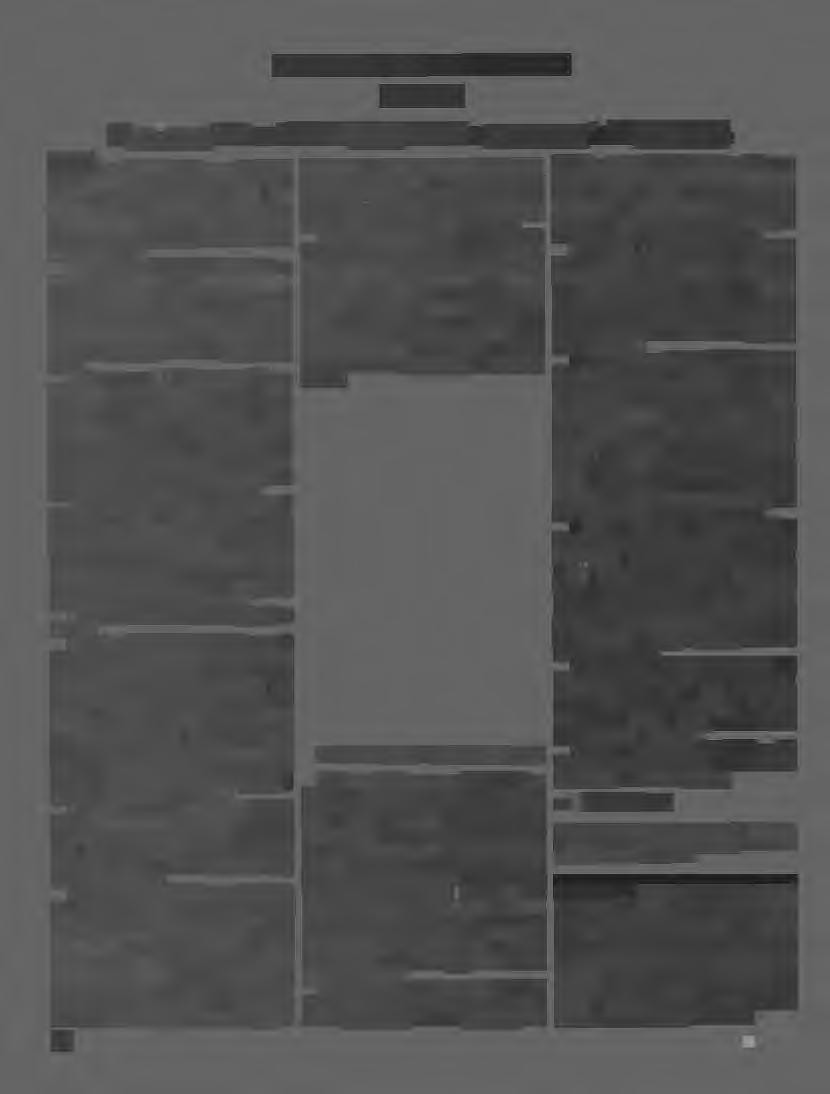
Two years after my surgery, when that I realized I had missed my funeral and was feeling better than ever thanks to my new macrobiotic diet, I decided I was ready to return to making self-portraits. But the challenge was enormous. How could I, "minus one," show my asymmetrical body and bring it to the level of my earlier work without provoking pity? When men come home from war bandaged and broken they are considered symbols of strength, even sexy. Could I actually show a mastectomy woman who looks beautiful, who has pride and dignity? A picture evoking not self-indulgence, but power and strength? The result is my series Balancing a Lopsided Act.
Photography and leftist magazines liked and published my work on breast cancer. The mainstream publications to which I repeatedly sub-
mitted my images admired them, too, but none would risk publication. Twenty-three rejections later, in 1993, the New York Times magazine surprised me by selecting my photograph Beauty Out of Damage as the cover image to illustrate an article about breast cancer.
To this day, I cannot decide which changed my life more; having a mastectomy or being the first cover girl to appear topless and breastless on a major publication. With one blunt image, the Times allowed both an artistic and a political statement to be made about cancer, women, and our culture's narrow view of what physical female beauty is.
I am one of many artists of the late twentieth century dedicated to fostering the heaUng of the environment and ourselves and to developing images with emotional, spiritual, and psychological messages. This new art seeks to bring about changes in the ways we practice personal politics and medicine. I created these images because I care very much about the people who have had to cope with breast cancer in their lives, in particular the women who have been subjected to irreversible, unacceptable, and often unnecessary methods of treatment.
I hope that my work will inspire others to become active in revolutionizing the medical professions. I have seen my operation on film. I say, "No one should ever have to go through this." I hope that in my lifetime, mastectomy and lymph node dissection will become extinct, and that through wider cancer prevention campaigns and better screening methods, women will be spared this type of surgery and death from breast cancer.
I look forward to the day when medicine will change so that, as Thomas Edison once said: "The doctor of the future will give no medicines, but will interest his or her patients in the care of the human frame, in diets, and in the cause and prevention of cliseases."
Artists are messengers. The truth can be shocking and uncomfortable, but it still beats tricks, lies, and issues in disguise.
- © Matuschka 1994
Reprinted with the Artist S permission from the catalogue, I Am One Woman, published by the YMCA Womens Art Ga.llery, Cincinnat.i, Ohio, .1994.
MATUSCHKAgained international prominence when the New York Times Magazine featured her post-mastectomy photograph, Beauty Out of Damage, on its August 15, 1993 cover. The artist has been featured in People, The Daily Express (London), Los Angeles Times, Chicago Tribune, Boston Globe, Stern, Der Speigel, and Marie Clarie, among others. Last year, the image illustrated here was the most widely published picture in the world.
30
© 1993 Matuschka, Beaut.y Out of Damage (color original)
BRIANWEIL
THE AIDS PHOTOGRAPHS
Exhibition Checklist

ACT-UP
ACT-UP (AIDS Coalition to UnleashPower)Demonstrationat National Institute of Health, Bethesda,Maryland, 1988
ACT-UP Action, "Day of Desperation,"New York City, 1991
ACT-UP Action, "Day of Desperation,"New York City, 1987
SOUTH AFRICA
Gold miner, South Africa, 1990
GoldMiner with AIDS returning home after having been denied work, South Africa, 1990
NEEDLE EXCHANGE
Youngsex-workersinjectingdrugs, Liverpool,England, 1988
CHILDREN
Prince, two-year-oldwith AIDS, New York City, 1986
DOM:INICAN REPUBLIC
Sex outreachworker,Dominican Republic, 1987
Sex workersin the Dominican Republicat riskfrom unprotectedsex, mustfight cultural resistanceto the use of condoms.Toprotect themselvesfrom infection a method was devisedto hide a condom in the sex-worker'smouth allowing them to secretlyslip it onto the penis of the client. On realizingwhat has happened,the typicalresponseof the man is acceptanceand laughter,ratherthan hostility.
M:ARIA
Flavia'sfuneral, Brooklyn,New York, 1987
Maria in her eighth month of pregnancywith Adriana, Brooklyn,New York, 1987
Maria in labor,giving birth to Adriana, Brooklyn,New York, 1987
Maria and Adriana visiting a family grave, Brooklyn,New York, 1987
Maria, self injectingexperimentaldrug, New York City, 1990
Maria and Adriana on Adriana'sthird birthday,Brooklyn,New York, 1990
Maria sayinggood-byeto Adriana, Sloan Ketteringhospital,New York City, 1991
SAFE SEX - CHICAGO
Safe sex, Chicago,Illinois, 1987
THAILAND
Sex workersparticipating in bodybuildingexhibition, Bangkok, Thailand, 1989 Go-gobar, Bangkok, Thailand, 1989
Sex worker,ChangMai, Thailand, 1989
31
SUPPORTING
Eric Aitkin
David Allison
GianfrancoArchimede
Nicholas Argyros
Margaret Edith Ana1I
David Baer
Ann Barton
Adriene Beneway
Barry Beniamin
Bob Bennett
Donald G. Besom
Nan Blake-Norvell
Valerie Brabb
JoannBrennan
Linda M. Bryant
Angela Cappetta
LauraColan
Anne T. Converse
BarbaraCrosby
LauraA Crosby
PhyllisCrowley
Terry Dagradi
Lee Day
Linda Day
JavierDe Luis
Chuck Delaney
Craig Demais
Nancy Depra
JosephDesciose
RebeccaDriessen
RichardEdelman
SandraEisner
Pam Ellerbrock
Gareth Evans
RichardFelber
Gisela H. Gamper
Larry Gay
Hans and Frances
Prof.John Glasse
FletcherGrayson
C. S. Greig
Terry Hans
PamelaE. Hawkes
L. Bill Helmer
Roy M. Hershey
Mark K. Horton
George Hoyer
Natalie Hull
Michael Hunold
The ImageWorks
Hana Iverson
Collete Jacobs
Marc Jargow
JenniferJohnston
Chris R.Jones
Christopher Jordan
Blan Kao
Ira Kaufman
RoxanaKeland
Dean Kessmann

Larry Ketchum
MichaelKimak
PatnciaA Kimak
John Kleinhans
EugeneKoloski
KathanneKreisher
SharonA Kuhne
Philip Lane
Chuck Larson
Teresa Lavander-Klaw
Nancy Lensen-Tomasson
JaneB. Lester
SusanaTorruella Leval
Douglas Lockard
JamesLocke
Dan MacDonald
Alan MacKellar
SilviaA Malagrino
FrankMarshall
Gary Matson
E. Ira McCrudden
Patnc1aMcDonough
Daniel 0. McSweeney
Richard Meisinger,Jr.
George Metivier
Sybil Miller
Andrew Mine
Peter Miraglia
RichardMontemurro
SarahMorthland
Andy Moss
Julio Nazario
Deborah Needleman
Leonard & Louis Orkin
Lynn Otzkowitz
MieczyslawOzog Photography
Louis Pasquini
Justo Penebad
Julio Perazza
JoycePerkins
JelsiP. Picou,Jr.
Heather Pillar
JuliePochron
Philip Porcella
John Power
Robert Pratto
Mike Przezdziecki
Pat Rabby
Stan Raffes
John Rand
Thomas Ritter
JoanSage
JenaG. Savadsky
Ann Schau
Steven H. Schoenberger
Scott Selders
Will & JuneSelders
Vincent Serbin
MichaelShiffnn
Brad Smith
Brent Sm~h
Anne Momson Smyth
Louis S. Snitkoff
EleanorSweeney
William Syder
FannieTapper
Harry Tarz1an
Wilton Tenney
Mary Thamann
LucilleTortora
MichelleTrapp
John E. Travelli
Kenneth Van Sickle
Robert Vizzini
William Wade
JannaWaldinger
Keith L. Waldrum
RandyWallick
Ms, C. Warwick
LaineWhitcomb
RichardA White
Calvin Lee Wilder
University Products,Inc.
Lilo Raymond
Linda K. Robinson
Wendi Schneider
John Schupf
Cathenne Sebastian
Jon D. Smith Jr.
EstherSmeller
Max Steele
David Sumberg
Alan Tibbetts
SusanUnterburg
Jessca & StevenWechsler
Nicholas D. Welch
Howard Wells Ill
JamesWojcik
Town of Woodstock
PATRON
AGFA Papers/BeselerCo.
Milton & SallyAvery
Robert F.Wilton Foundation
Peter Zeray
SusanM. Z1ngrone
FRIEND
Bruce Bennett
EuniceBoscov
EdnaBullock
William Carter
Dean Chamberlain
Allan Chasanoff
PenelopeA Dixon & Assoc. Inc.
PeggyEliot
Daniel Englander
Lillian Farber
Henry Feldstein
Cheryl Finley
Cheryl R. Fischer
Steven& JaniceFriedman
Rodrigo Garcia
Gerald Goldman
Hisako Harada
Wanda Hicks
Miyako Higashi
Bill Hunt
SuzanneJacobson
Kathleen Kenyon Sr.
JohnJ.Kindred Ill
Gay Leonhardt
Arthur Lichtman
Helen Marcus
Nan C. Meinhardt
JefferyMillstein
Bernard Mind1ch
Harvey Osterhoudt
Mary Padua
Mary Patania
Don Patelson
Roger Persell
Chuck Pine
Philip& March Cavanaugh
BernardChanin
Mr. & Mrs.John Dydo
SusanFenris
SusanFowler-Gallagher
JulieGalant/Fotofolio
Betr Gates-Wamen/Sotheby's
Howard Greenberg
Robert Gurbo
David J.Hall
Sue Hartshorn
Rollin Hill
The ImageBank
DouglasC. James
Greg & Louise Kandel
Barbara& Peter Kenner
Colleen Kenyon
Kevin& JaneKenyon
The Andre Kertesz Foundation
Louis Klaitman
The EastmanKodak Co.
RonaldA Kurtz
Dominic Lam
Ellen& David Levy
MarciaLevy
Ken Lieberman Labs
Betty Marks
RichardL. Menschel
LaurenceMiller Gallery
Marc Miller
Ann L. Morse
Peter MacGill
Dana Osborn
JosePicayo
J.RandallPlummer
The Polaroid Corporation
Alan Siegel
Vincent Vallarino
Roy Zimmerman
TH E CENTER F OR PHOTOGRAPHY AT WOODSTOCK 59 TINKER STREET WOODSTOCK NEW YORK 12498































